FORESTRY & TIMBER NEWS


February 2023 Issue 115
MAKING EVERY WOODLAND UNIQUE
IN THIS ISSUE: WOODLAND MANAGEMENT BUSINESS DIVERSIFICATION



February 2023 Issue 115
MAKING EVERY WOODLAND UNIQUE
IN THIS ISSUE: WOODLAND MANAGEMENT BUSINESS DIVERSIFICATION
Offering a complete nutritional package for forestry, woodlands and Christmas trees:
l GAFSA Unground Rock Phosphate
l Protected Nitrogen to optimise efficiency

l Controlled Release Fertilisers for planting hole
- Available up to 2 seasons
- Available in 1.2 & 25kg bags
l New, in-house heat-sealed 25kg bagging line
l Broad spectrum soil and foliar analyses

l Fertiliser advice and recommendations
l NUTRI-CO2OL independently verified product carbon footprint
Technical enquiries:
Commercial enquiries:
Julia Andrews -
forestry@originfertilisers.co.uk

Peter Scott - forestry@originfertilisers.co.uk

Now available from Green-tech Contact: 01423 332100
sales@green-tech.co.uk

www.green-tech.co.uk


FOREST
46 Cautious but buoyant: Forestry outlook 2023





LEGAL MATTERS
50 Ash dieback: How to manage woodland access risks



FISA
52 Safety Accord launches Modified Machinery subgroup to address bespoke re-purposing FOREST

54 Can acetamiprid be safely used to protect young trees from Hylobius damage? MACHINERY

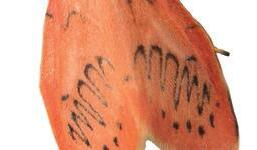

56 Shear simplicity: A blast from the past



61 Is the coupe worth the cost? SMALL
64 Maximising minor products from small woodlands

OUR WOODLAND MARKET REVIEW FOR ENGLAND & WALES 2022



Now available to read online at www.tustins.co.uk/news

Or call 01869 254938 to request a hard copy

CAE GWIAN FORESTRY ESTATE
Bontddu, Barmouth, Gwynedd 474.14 Acres / 191.88 Ha



Fast growing forestry asset in rural Wales combining Snowdonia National Park location with outstanding commercial forest. Sporting included.

Guide price: £3,750,000
PERTHYBU WOOD
Sarn, Montgomery, Powys 73.18 Acres / 29.61 Ha
A compact commercial forest of newly planted spruce and Douglas fir as well as extensive stands of mid rotation spruce and pine. Sporting included over part. Offers over £375,000
REEDSHAW MOSS
Keighley Rd, Cowling, North Yorkshire
134.94 Acres / 54.61 Ha
An impressive commercial woodland planted in the 1970s on Ickornshaw Moor. Good conifer planting ground with superb vehicular access.
Guide price: £1,200,000
ALLUMS GROVE & HAIND PARK WOOD
Kempley Road, Dymock, Glos
For sale as a Whole or in 2 Lots
In All, 153.47 Acres / 62.10 Ha



Superb multi-purpose woodland. Large quantities of mature fir, spruce, oak. Road frontage. Good access.
Guide prices: £820,000 and £830,000
THE KINGTHORPE WOODLANDS
Kingthorpe, Pickering, North Yorkshire
In all - 243.5 Acres / 98.5 Ha
A collection of four woodlands with a wide range of species and ages ranging from mature and maturing commercial crops and mixed broadleaves.





Guide prices: £25,000- £975,000

CLIFTON HEATH WOODLAND
Clifton Hampden, near Abingdon, Oxon 91.21 Acres / 36.91 Ha
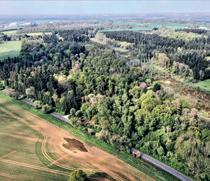

An interesting opportunity to acquire a high quality managed forest in a rural location with easy reach of the city of Oxford. Sporting included. Guide price: £990,000
COED GLYNCLYGYROGWEN
Near Machynlleth, Powys 273.78 Acres / 110.79 Ha
A medium to long term commercial forestry investment benefitting from outstanding aesthetics in a great location. Sporting included. Offers over £1,800,000
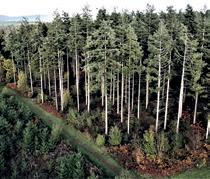
well as broadleaves to achieve that.
STUART GOODALL CHIEF EXECUTIVE, CONFOR



Trudy Harrison described the fact that the UK grows less than 20% of the wood it uses as “unacceptable” and said she wanted to work with the industry to tackle this and use more home-grown timber.
In a recent update to the planned Environmental Land Management scheme in England, it was great to read the words “improve the UK’s timber security and rural economy through providing increased productivity in the forestry sector”. This represents a welcome and much needed turnaround in policy.

Conference attendees also heard from Tom Barnes, CEO of Vastern Timber, about plans for a National Wood Strategy for England. Tom is writing the strategy with Confor’s Deputy CEO Andy Leitch and it will be presented to the minister later this year.
This positivity from the UK government echoes what we hear in Cardiff and Edinburgh – using more home-grown wood is clearly a good thing and we need more conifers as
Confor is a membership organisation that promotes sustainable forestry and wood-using businesses. Confor members receive Forestry and Timber News for free as part of their membership. For more information on membership, visit www.confor.org.uk/join-us
Past issues and articles can be accessed online at www.confor.org.uk/news/ftn-magazine
Non-member subscriptions: £71.50/(£77 overseas)
Contact FTN@confor.org.uk
Forestry and Timber News is published by Countrywide Publications on behalf of Confor.

For advertising, contact Dan Rice 01502 725858
daniel.rice@micropress.co.uk
Stuart Goodall

Chief Executive
T: 0131 240 1416
E: stuartg@confor.org.uk
Andy Leitch
Deputy Chief Executive
M: 07881 510171
E: Andy.leitch@confor.org.uk
Membership and Marketing Officer
E: eliza@confor.org.uk

Eleanor O’Neill
Communications Manager
M: 07918 255930
E: eleanor.oneill@confor.org.uk

Richard Hunter
Technical and Industry
Support Manager
M: 07867 379657
E: richard.hunter@confor.org.uk
Our sector has grown rapidly since the 1980s as the availability of wood has increased. A huge wave of investment (hundreds of millions of pounds) has taken place between then and now, creating a diverse mix of wood processing facilities, serviced by forests managed by professionally trained foresters, highly skilled machine operators, planters, fencers and many more businesses from nurseries onwards.
Looking ahead, our ability to decarbonise sectors like construction, to lock up carbon in trees and timber, and to provide well-paid green jobs in rural areas is a great strength. If there is confidence in future wood supply, then through investment, innovation and entrepreneurialism we will see a new wave of growth. However, if that confidence wanes, then any short-term forecast increase in supply will prove to be just that – short-term.
In 2023 the Confor team will continue to work hard to support that growth through securing the support of politicians, facilitating funding to improve productivity, helping to upskill and bring new high-quality people into the industry and securing future supplies of wood. And crucially, continually building the sector’s reputation.
Anthony Geddes
National manager for Wales
T: 07494 079305
E: anthony@confor.org.uk
April Armstrong
National Manager for Scotland
M: 07780 190821
E: april.armstrong@confor.org.uk
Confor
editorial
The Confor Dinner & Awards champion the efforts of inspirational individuals and organisations going above and beyond in the forestry and wood-using industry.
At the end of 2022, we asked you to nominate colleagues and peers who deserved recognition for their work to drive the sector forward, whether that be through forward-thinking leadership, changing attitudes about the industry, innovating new ways of working, or contributing to net zero.
This shortlist of nominees showcases the breadth of skill and achievement present across the wide-reaching spectrum of the industry.
Winners will be announced at the Confor Dinner & Awards event at Surgeons Quarter, Edinburgh on 28 February. Cornwall-based designer Jamie Zennor Downes-Atkins (Zennor Made) has handcrafted awards to be presented on the night.


Stuart Goodall, Confor Chief Executive, commented: “This event has become a real highlight in the sector’s calendar and represents a chance for members of our industry to celebrate the incredible work being done across the board to further forestry and wood in the UK.

“We’ve had some outstanding nominations this year and I would like to heartily congratulate everyone who has made the shortlist.
“Opportunities like this not only allow us to recognise the achievements of our colleagues and peers, but also highlight the positive nature of modern forestry to those outside the industry. The Net Zero Award is being presented for the first time this year and speaks to how we are moving with and meeting the challenges of these times.”
In addition to the four category awards, the winner of the Confor Dedicated Service to Forestry Award will also be pre-
sented at the dinner. This title is bestowed on a Confor Member who has made an outstanding positive contribution to the forestry industry over the course of their career.
The ICF Professional Forester of the Year and the Scottish Forestry Trust 40th Anniversary Award for Education and Outreach will also be announced at the event.
Presented to an individual with outstanding skills, who has the potential to be a leader in the forestry and timber sectorsomeone showing initiative, passion and making a real difference.
Sponsored by James Jones & Sons Ltd.
MIRIAM JONES-WALTERS
Specialist Advisor, Land Stewardship, Natural Resources Wales

Miriam has been involved in leading numerous projects that have made a genuine positive difference to UK forestry. She currently leads on the woodland creation programme at the Welsh Government Woodland Estate. The judges noted Miriam’s demonstrative passion and initiative in identifying and engaging stakeholders, particularly in challenging circumstances.
DR KATE PALMER
Forester, Pryor & Rickett Silviculture
Seeking a change in career, Kate achieved a Masters in Environmental Forestry in 2022 and has brought her skills in project management and stakeholder engagement to bear in her new role. She has quickly developed a sound understanding of the technical aspects of forestry and

the workings of the industry. Kate aims to become a role model for other women entering forestry careers.
NEIL WHITE

Branch Manager, Scottish Woodlands Ltd

Neil oversees the mentoring and training of colleagues on the Graduate Development Programme. He has always been keen to help develop junior staff and has proven himself a rounded, confident, and highly competent senior manager. Neil has undertaken significant training to hone his skills while still being heavily involved with some of the UK’s largest forests.
Presented to an individual, business or organisation promoting the forestry and wood sector in a positive, impactful way - through personal engagement, campaigning, or communication.
Sponsored by Scottish Woodlands Ltd.
TOM BARNES
Managing Director, Vastern Timber



Tom is putting his own time and money into promoting greater understanding and awareness of the sector. He has been the driving force behind Wood for the Trees, a series of films on forest management and resilient woodlands with over 60,000 views. Through his advocacy, Tom is helping to engage policymakers in the development of a national wood strategy.
KATY DAVIES
Director of Operations, Agrecruiting Katy works with a wide network to promote forestry careers and address the skills shortage in the industry. She has hosted webinars in partnership with Bangor University, runs her company’s YouTube channel, and has started a podcast (TreeTalk) to explore different aspects of forestry. Judges appreciated Katy’s initiative in generating interest in the sector.
LIZ SHARKEY
Chartered Forester, Sharkey Forestry
Reaching audiences through her social media platforms, Liz pushes the message that forestry is a healthy part of the ecosystem. She makes use of Instagram to speak clearly and passionately about her


work while challenging perceptions by documenting her experiences as a forester, business owner and mother.
Presented to an individual, business or organisation delivering successful innovation or research which has clearly demonstrated greater productivity or efficiency in the forestry and wood industry.

Sponsored by Forestry & Land Scotland and Forestry Commission.








The work undertaken by BH Wildlife Consultancy and Forestry and Land Scotland (FLS) is shedding new light on the scale of challenges around deer management. Using drone-gathered aerial surveys from BH Wildlife Consultancy to integrate with wider data dashboards, FLS are able to better engage stakeholders and support wildlife management objectives.
JO CLARK
Head of Research, Future Trees Trust
Jo has spent years dedicated to broadleaf tree improvement for the forestry and timber industries. She has championed using research to secure a future for broadleaved trees to produce better quality and faster-growing hardwood timber. Improved seed has been made available to many nurseries across the UK due to the work of Future Trees Trust.

VASTERN TIMBER
In 2016, Vastern launched Brimstone, an innovative range of thermally modified British timber, that offers a sustainable and economical alternative to imported hardwoods. The company opened a purposebuilt thermal modification plant in 2021 for the sole purpose of meeting demand for the product. As a project, Brimstone will have a lasting impact on local woodlands and housing. continued on



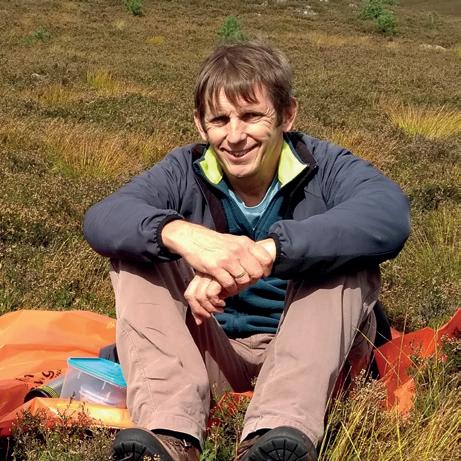

This exciting new sector award recognises the contributions made by Chartered Foresters to the betterment of forestry on a community, regional, national or international level. Professional Forester of the Year is awarded on the basis of a specific project or a range of activities undertaken by a member of the Institute of Chartered Foresters within the last three years.
Jonathan is one of the few Chartered Foresters working in the rail industry. Instrumental in setting policy and providing direction for the management of lineside vegetation, Jonathan demonstrates a pragmatic approach to the sustainable management of trees and woodland alongside an expansive infrastructure network. Judges were impressed by the support Jonathan’s colleagues gave to his application, his work in promoting Technical membership of the Institute, and his active engagement with colleagues in the railway industry.
David’s nomination highlighted his vast experience in the sector, showcasing his work across the UK and internationally in both private and public sectors. He has been a dedicated forestry advocate for more than 30 years and his significant expertise includes commercial landscaping, leading on complex woodland creation schemes, harvesting, grants and regulations, policy and processing. The judges were impressed by the continued commitment David has shown to the sector and his willingness to continually learn and share knowledge with colleagues.
continued from p7
Presented to an individual, business or organisation making a specific and measurable contribution to the forestry and wood industry’s efforts to deliver the UK’s net zero ambitions. Award sponsored by Tilhill.
NEIL STODDART
Managing Director, Creel Maritime Ltd

Creel Maritime are consulted to lead many net zero projects across the country because they are known for their focus on decarbonisation. Neil champions efficiency and productivity, and challenges climate change in a bid to see the industry he loves so much remain sustainable, profitable and ultimately cleaner and greener than the day he entered it.
A champion of sustainable forestry, Andrew uses his wide-ranging social media presence to challenge and debunk myths and wrongful impressions of forestry with considered, evidencebased responses. Given the importance of social media in reaching the next generation of forestry professionals, the judges were particularly impressed by the amount of work Andrew does in this area, the effort he goes to and the positive impacts he achieves. It was unanimously agreed that the sector needs more influencers showing this level of initiative.
Paul’s name has become synonymous with community forestry in England. He has initiated, led and delivered the Trees for Climate tree planting programme, part of the Government’s £500m Nature for Climate Fund. His quiet and competent approach belies the sheer scale and significance of this work. The judges were also impressed by Paul’s work in public engagement, which has increased significantly the understanding of what forestry and woodlands can offer to society. His networking with regional partners ensures many other areas benefit from his work.
the UK’s planting targets and reaching net zero would not exist. Her leadership and skill in bringing woodland creation and natural capital solutions onto the centre stage has been instrumental.

The Woodland Carbon Code has supported over 67,000 hectares of woodland creation across the UK in the past 10 years. Without Vicky, this tool for maintaining
Sonichem have developed a low-energy ultrasonic process to convert woody biomass, such as sawdust from the forestry industry, into chemicals. This method generates almost zero waste and produces high-value cellulose and lignin. A current project with Bath University is looking to identify construction and composite applications for these products.










The Confor Woodland Show is a place for anyone interested in forestry and woodlands to hear about the latest products and services, receive practical advice, network with peers, and enjoy the demos and seminars offered over the two days.
For the first time, we’re inviting you to join us at the Bath & West Showground for this event. We hope a change in venue will ensure the show returns bigger and better than ever before.
Ticket sales will open in Summer 2023. However, all Confor Members are entitled to free entry on production of a valid Membership Card and no pre-booking is required. Note that each card is valid for one attendee only and can be printed or displayed on your device.
Exhibitor bookings are open now and early bird prices are available until 28 February 2023. Exhibitors who also had a stand at APF 2022 are entitled to an additional 5% discount.
In previous years, the Confor Woodland Show has welcomed:
• Manufacturers/distributors of forestry machinery and equipment

• Forest advisory and management services
• Nurseries and makers of forest products
• Wildlife and conservation bodies
21-22 SEPTEMBER
BATH & WEST SHOWGROUND
• Suppliers of wood heating systems

• Woodland craft workers
To view the Exhibitors’ Brochure, visit https://bit. ly/3DTbwHd.
The Confor team will, of course, be in attendance and our tent will play host to seminars, Member events, and plenty of chances to catch up in person. We’re looking forward to seeing familiar faces, meeting new ones for the first time, and hearing all your views on the latest news.
We will also be ready to discuss the benefits of joining Confor with any prospective new Members, so please do invite your colleagues along.
See you in September!
WITH THANKS TO OUR SHOW SPONSORS
Happy 2023! I hope everyone had a lovely festive break and is feeling refreshed for the new year.
Looking forward, we have an exciting line up for 2023. Firstly, the upcoming Confor Dinner and Awards on 28 February. This is a special occasion to celebrate forestry and acknowledge those who do extraordinary work in the industry, as you can see from our fantastic shortlist in this issue. I hope to see a lot of you there!
Our much-loved Confor Diaries for
2023 were sent out with December’s Forestry & Timber News. If you didn’t receive yours and would like one, please feel free to contact me. We are also more than happy to send extras for clients and colleagues!
As we are now well into the new year, this is a great time to make sure we have up-to-date information for your membership subscription. You can check your current details within the Members Area of our website and if you have any staff updates (new starts or leavers), do let me know!
Whilst you are in the Members Area, make sure to enter your details into the Members Directory. Anyone can use this resource to find and contact a Confor Member business or individual who provides the services they need - it’s a great

We are sorry to inform members that Maria Bellissimo has left Confor. Maria joined Confor in September 2021 as Policy Officer, providing policy development support and advice.

From the summer of 2022, she also took a leading role in the organisation’s public affairs, raising understanding and support for the forestry sector in political circles across the UK.
Chief Executive Stuart Goodall said: “Maria quickly became a popular member of the Confor team and brought insight to politics at Westminster in particular. We all wish her the best.”
Confor is finalising its updated public affairs plan for 2023 onwards and after that will seek to resource its delivery.
promotional tool to take advantage of!

Finally, welcome to our new Members in England: Luisa Cundle, University of Cumbria; Baden Powell, B Powell Forestry Ltd; Simon Duncan, Simon Duncan Forestry; & Ross Butterworth, CLECO Ltd and Scotland: William McCormick, William McCormick Forestry; John Goffin, KANA; Derek Prosser, H & M Prosser; & Stuart Kennedy, Global Surface Intelligence Limited.

Contact Eliza on 07918 880285 or email eliza@confor.org.uk
Take our Membership Survey!
PROFESSIONAL QUALITY. POWERFUL CUTTING. BATTERY POWERED.
The MSA 220 TC-O is STIHL’s most powerful cordless arborist chainsaw to date. It’s the first STIHL chainsaw that has an LED display and integrated oil sensor, which provides key information during operation. With equivalent cutting performance to the petrol MS 201 TC-M and longservice life, arborist professionals can take on the tough tree maintenance and removal jobs.
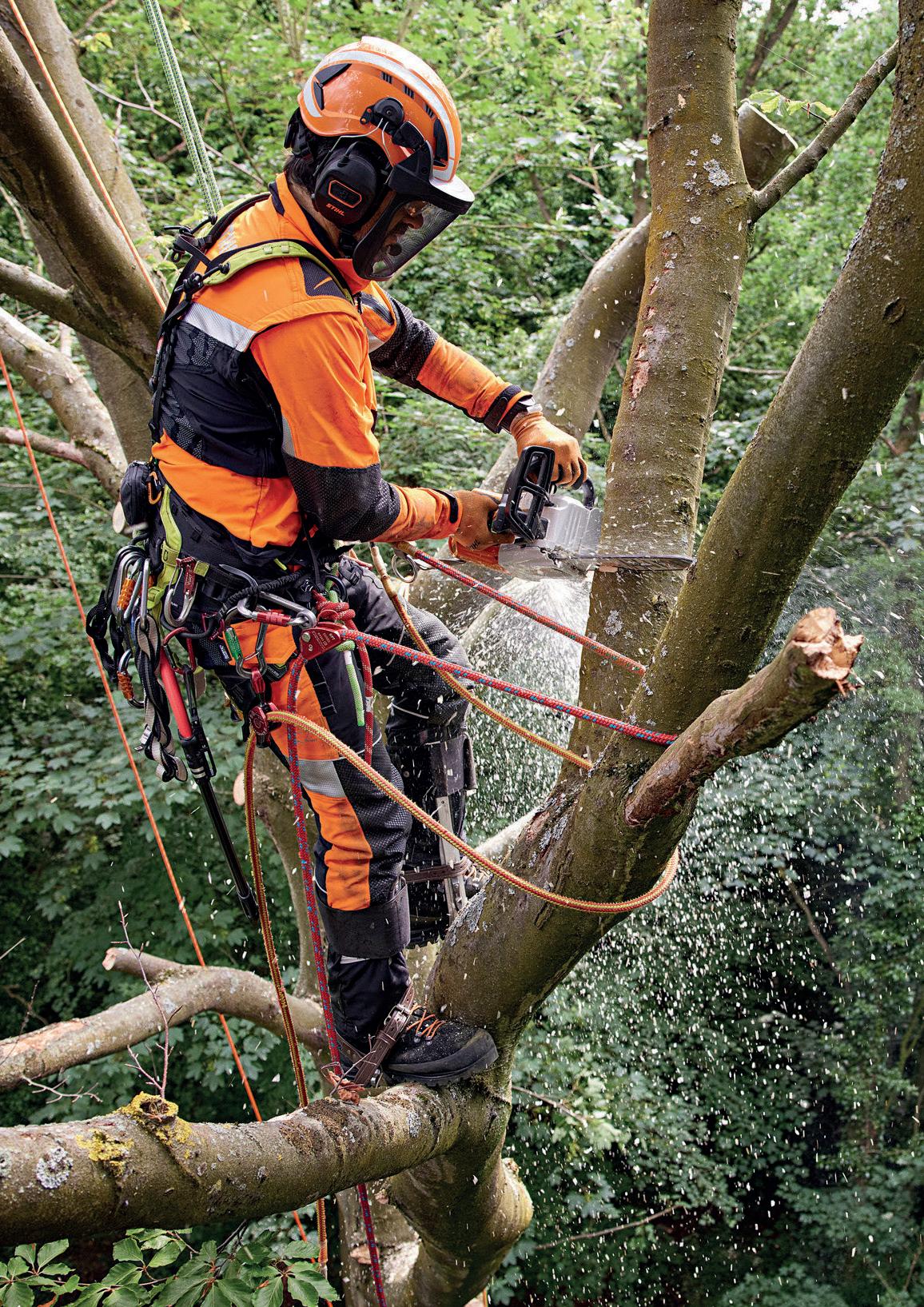
The new ADVANCE ProCOM headset and ear defenders on the X-CLIMB helmet allow you to communicate with workers on the ground seamlessly, with simple networking over vast distances for up to 16 people, plus much more.

PROFESSIONAL PERFORMANCE:


THE MSA 220 TC-O CORDLESS CHAINSAW.
AVAILABLE AT YOUR LOCAL STIHL APPROVED DEALER
SMART, EFFICIENT, COMFORTABLE COMMUNICATION: STIHL ADVANCE PROCOM.


PEFC is an independent, non-profit, non-governmental organisation, which promotes the sustainable management of the world’s forests through independent, third-party certification. Established in 1999, we are now the world’s leading global forest certification system ensuring availability of certified raw material and controlled flow through our international chain of custody standard. For more information, please refer to our website: www.pefc.org
Reporting to the UK Board of Directors, you will be responsible for the operational and strategic, day to day running of the PEFC scheme throughout the UK and will work closely with our international staff based in Geneva, to deliver our strategy further afield. Key accountabilities include:
Responsibility for the chain of custody and forest management certification schemes including the handling of enquiries, maintenance of records and reporting of all entries to PEFC International along with support development to ensure standards are maintained
Monitoring and ensuring compliant use of PEFC trademarks in accordance with the Trademark Standard
Controlling notification procedures and maintaining surveillance with certification bodies to ensure compliance
Acting as Secretary to the Board of Directors,
to ensure that robust governance is in place
Overseeing financial management, liaising with accountants to ensure company accounts are prepared and filed accordingly.
Implementing PEFC International requirements at national level and representing PEFC UK, both internally and externally, at home and abroad and liaising with all stakeholders
General management of our national office, in conjunction with our Operations Manager, to ensure efficient and effective organisational performance and growing the business to ensure that it remains on a sustainable footing
We are particularly keen to speak to individuals with the following experience, skills and attributes:
Educated to degree level, in a relevant discipline
Extensive knowledge of chain of custody / ISO/ Forest Management certification






Previous experience of working independently and in a role that involves travel

Previous experience in financial management, governance and reporting to a Board of Directors


Excellent verbal and written communication skills
Ability to influence both corporate and political stakeholders
Due to the planned retirement of our long-standing Executive Director, we are seeking a dynamic and experienced Executive Director and National Secretary to drive our vision and passion for sustainable forest management and chain of custody certification. PEFC/16-01-01
An updated version of guidance on Responsibilities for Environmental Protection in Forestry is now complete, following review by the Forest Industry Environment Group.

Guidance on Responsibilities for Environmental Protection in Forestry has been prepared by the Forest Industry Environment Group, founded by Confor and representatives from across the forest industry to advocate and facilitate high standards of environmental practice and compliance across the sector.


A brief Pocket Guide leaflet has also been created and is included with this edition of Forestry and Timber News. This is intended to be used on-site as part of briefing forestry contractors.
Everyone in forestry work has a responsibility to protect the environment.
The guide builds on the roles set out in FISA’s Managing Health and Safety in Forestry. It contains information to help landowners, employers, the selfemployed, and those in control of work in forestry to:
• deliver their responsibilities.
• meet legal environmental protection requirements.


• clearly demonstrate compliance.
It also helps address certification requirements under the UK Woodland Assurance Standard (UKWAS).

Environmental protection and en-
hancement are of paramount importance as we undertake day-to-day forestry and woodland activities and present social and ecological challenges for all forest managers.
Good planning, consultation and communication is required for any forestry work activities to protect, for example, archaeological features, protected species and sites, the water environment, and to mitigate all environmental harm.
This guide is about ensuring clear communication to demonstrate environmental protection requirements are addressed and roles and responsibilities are consid-
ered and demonstrable.
In developing and revising this document, the Forest Industry Environment Group has liaised with FISA and environmental and forestry regulators. The guide is endorsed by Confor, Euroforest, FISA, Forestry and Land Scotland, Fountains Forestry, SEPA, Scottish Woodlands and Tilhill.
A full version of ‘Guidance on Responsibilities for Environmental Protection in Forestry’ is available to view online (https://bit.ly/3I6SakA). Hard copies will be available to order in due course.
All forestry uses of Gazelle for Hylobius control will cease in July 2024 unless discussions between Confor, Forest Research, and the manufacturers can find a solution to environmental concerns.
The pesticide regulator within HSE are shortly to issue an new approval notice for Gazelle SG, the insecticide which we currently use through an off-label approval for the control of Hylobius
The new approval will exclude all forestry uses, except use on container-grown plants under glass or polytunnels in the forest nursery. This is largely due to the results from standard analysis techniques of the active ingredient, acetamiprid, not meeting current environmental safety standards.
A similar product, Insyst, will, however,

continue to be used in sugar beet, potatoes and oilrape.
The only other approved product for Hylobius control, cypermethrin-based Forester, is also predicted to be revoked in the near future, and is, in any case on the FSC Highly Restricted list, so unlikely to be permitted in certified forests.
Once the revised approval is published, then growers will have six months to purchase the product, and a further 12 months in which to use it, so last use is likely to be in July 2024.
Confor are in discussion with Forest Research and the UK suppliers, Certis Belchim, to find ways of continuing use after the expiry date.
Colin Palmer, Rural Services, represents Confor’s chemical & pesticide helpline for Members. www.ruralservices.info
The Forest Industries Education & Provident Fund enabled students and graduates from across the UK to take part in career-boosting conferences and training at the end of 2022.
success story from a farmer moving into the forestry space.
Within the academic space, it can sometimes feel as if the life you are working towards is some far-off unknown. Even in the seemingly niche corner of forestry, career opportunities are wide, and therefore can be an opaque prospect. We all left with a firmer grounding of what our careers may develop into after graduation.
Hungry for more, BFSA plans to expand access to professional forestry conferences in the coming years so that more students can benefit from the exposure from which we have learned.
 Ben Howells and Connor Thornton
Ben Howells and Connor Thornton
Eight Bangor Forestry Students’ Association (BFSA) students attended the Institute of Chartered Foresters Wales Regional Conference in Swansea last November, thanks to support from the Forest Industries Education and Provident Fund (FIEPF). This was the students’ first chance in the post-covid era to attend an in-person professional conference and their response was incredibly positive.
An informal get together with the event organisers the night before allowed the students to engage with industry professionals from public, private and academic sectors of forestry.
Suddenly finding ourselves in a room full of prospective employers would usually be a daunting scenario for any budding forester, but we were immediately amongst
likeminded people, many of whom were Bangor University alumni. We discussed our studies, inspirations and future plans within forestry with experienced professionals who were generous with advice, guidance and refreshments.
This year’s conference, titled Creating Woodlands that work for Wales, put agroforestry at the forefront of the agenda, incorporating speakers not just from forestry, but from the agricultural sector as well. Throughout, emphasis was given towards the importance of these two sectors, often seen as separate and conflicting, coming together to find common goals and strategies – something we will attempt to take forward into our placement years and employment.
For many of us, the opportunity to interact with forestry clients are few and far between. One of the best talks of the conference was given by Jack Lydiate, whose moving speech spoke of the positive legacy his new forest might leave for his children, and touched on a wider, more integrated idea of agroforestry for the future. This offered insight into the motivations and experiences of prospective clients and it was encouraging to hear a
Rosie Kalkowski, who graduated in 2022 with a degree in forest management from the University of Cumbria, recently gained a professional tree inspection qualification with support from the FIEPF.
Learning about the issues that trees and woodlands are likely to face as a result of climate change motivated me to focus my career on maximising the adaptability and resilience of trees and woodlands in England.
A professional tree inspection qualification seemed like a valid way of increasing my ability to do this as it will train me to identify trees that are ailing from diseases, pest damage or other structural problems. I will then be able to use this knowledge to write and submit reports that detail means of improving the health and vitality of existing trees, as well as identify trees that should be felled and replaced, thus expediting the process of re-planting and regeneration.
This qualification will be invaluable in my career prospects and constitute hours towards continued professional development and pursuing chartered status.
Rosie Kalkowski




Over 130 Confor Members and guests gathered in London for our 2022 UK policy conference. Speakers and panellists from across the industry and government addressed some of the key issues facing the forestry and wood-using sectors in a day of thought-provoking discussion. David Lee reports.

An address from the new UK Forestry Minister was well-received as the keynote speech of Timber! Why the UK needs the wood - and the trees on 8 December 2022.
Trudy Harrison MP told the Westminster event: “We want more timber in construction to build homes across the UK and to do that, we really need more conifers.
“Trees answer so many of our grand challenges, including net zero, and Levelling Up as so many forestry and wood jobs are outside the south-east.”
She said the ‘conifer vs broadleaf’ debate was not an issue and that she wanted more mixed-species, multi-functional woodlands. “I’m surprised what all the fuss is about as I enjoy wonderful conifer woodlands, and their wildlife and biodiversity, but I also enjoy broadleaf woodlands and their many benefits. This is a non-issue for me.”
She described the fact that the UK grew less than 20% of the wood it used as “unacceptable” and said she wanted to work with the industry to tackle this and use more home-grown timber.
“The manifesto commitment is well-























known - to plant 30,000 hectares every year [during the lifetime of the current parliament] - but we are still woefully short,” she said. “We are serious about forestry and timber and about hitting the planting target.”
Reducing bureaucracy was vital, the Minister said: “I want to slash the time it takes to plant a tree. I hear horrific stories. I want to take a chainsaw to the time it takes to plant a tree.”
Philip Dunne MP, Chair of the Environmental Audit Committee (EAC), next took the spotlight to answer questions on the committee’s inquiry into sustainable timber and deforestation.



Launched in July 2022, the EAC investigation is examining how the UK can best scale up a sustainable, resilient domestic timber sector and reduce its reliance on imports and, in addition, the degree to which UK supply chains contribute to deforestation. Confor was among several industry representatives to offer evidence to the EAC last year.

Growth and adaptability in the timber industry was a key theme of the day. Lord Deben, Chair of the Climate Change Committee (CCC), said there were enormous

opportunities ahead, but that the sector had to be fleet of foot.
“There is a very remarkable future for your [wooden] products but you will need to change repeatedly,” he said in a recorded interview. “What is right to use now
might not be right in five years - because the circular economy will change. So, your industry needs to be on its tippy-toes to change to do this.”

Lord Deben said it was “essential” for the UK to look beyond its own shores in considering future timber production, with global demand inexorably rising at the same time that domestic supply is predicted to fall.
“The forestry industry is global,” he said. “We need an integrated attitude because we cannot grow all the timber we need in the UK here. In Britain, I think there is an enormous growth opportunity for the industry - we need to grow more timber at home and any timber that is brought into this country must meet the highest forestry stewardship standards. If that is not happening, we should not be importing that material.”
He also urged farming and forestry to work better together, and criticised the farming lobby for claims that new woodlands would take land out of food production. “As you get older,” the 83-year-old said, “you realise much more that it’s not about ‘either/or’ choices, it’s much more about ‘both/and’.”
Confor Chief Executive Stuart Goodall welcomed Lord Deben’s comments. He said: “I agree there is a remarkable future for our industry. We need to develop a vision to realise it.”
This meant a clear understanding of where the industry is now, where it wants to be - and what it needed to do to get there, he added.
Later, Richard Stanford, Chief Executive of the Forestry Commission, said the climate crisis demanded “action, not prevarication” to ensure many more trees were planted. He urged everyone to “follow the science” and understand that a wide range of resilient species - including productive conifers - had to be planted.


continued on p19
continued from p14
Several students on forestry and landrelated courses attended Confor’s policy conference thanks to generous support from the FIEPF. Below are some comments on how they benefited from attending the event.

The consensus at this year’s conference of the need for more coniferous commercial plantations, particularly in England, has given a student like me the confidence that there is a future in forestry.
This event has enabled me to have a greater understanding of the sector and provided an excellent opportunity to make connections in the industry.
Dara Hunter Blair, Harper Adams UniversityAs I previously completed a doctoral placement within the Welsh Government Forestry Policy team, I have a strong interest in issues related to tree planting, woodland creation, and the timber industry. Hearing more about the progress made in overcoming the challenges related to these areas was really encouraging and interesting.
Katy Faulkner, University of WarwickI left certain to my core that whilst we strive to overcome difficult economic and environmental crises in the current geopolitical world, the forestry sector has a voice - a loud one! A voice that we must use to extol the virtues of the industry and its many dedicated practitioners of which I hope to become one in the not too distant future.
Christopher Moodie, University of CumbriaIt’s the first time I have been to a conference and I found it highly engaging and interesting – I look forward to attending more in the future.
There seemed to be a representative from many different areas of the industry. This is essential for effective talks and decision making surrounding the direction in which forestry and woodland management in the UK is going.
Benedict Walker, Bangor UniversityTimber! marked something of a watershed for commercial forestry. Emerging from a long and fractious episode with the environmental movement, a new consensus has broken out.
Natural and semi-natural woodland is the tool of choice for preserving native species, enhancing and expanding biodiverse habitat. But the plantations have it when it comes to tackling the climate emergency. Net zero waits for no bryophyte and with the clock ticking, only a rapid expansion of fast-growing conifers can sequester carbon in time to hit targets
Rowena Young, Bangor University Timber! conference attendees. Top row (left to right): Katy Faulkner, Christopher Moodie, Benedict Walker. Front row (left to right): Rowena Young, Dara Hunter Blair, Liam Galashan. Photo credit: Carolyne Locher.
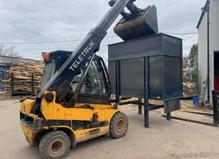





Timber Harvesting Specialist low impact harvesting using a precision stroke delimber harvesting head for precision timber cutting • Timber Extraction Environmentally friendly timber extraction using low ground pressure machinery, ideally suited to wet and difficult sites • Timber Marketing and Standing Sale Marketing and sale of standing timber and cut roundwood of all types and grades • Woodland Management Undertaking all aspects of Woodland Management from pest control and pesticide application, vegetation management, site clearance, windrowing and brash raking, site preparation and replanting • Estate Management Site drainage, ditch clearing, bracken and gorse control, forestry roads and infrastructure and work on Sites of Special Scientific Interest (SSSI).

continued from p17
“Let’s stop this dogma of native woodlands good, conifers bad,” he said. “Trees are all good. Idealism and purists have their place but we need informed decision-making using science and data.
“We have got ministerial support so let’s get behind that and get these trees in the ground.”
Mr Stanford said the England Woodland Creation Offer had seen a large increase in the number of schemes coming forward, but the majority were small - an average of just four hectares.
He concluded by calling for greater collaboration, saying: “We need pragmatism and delivery over purists and prevarication. Champions of woods and forests are too few to be divided.”
Mike Childs of Friends of the Earth (FoE), who co-wrote FoE’s report Why The UK Needs More Trees, also called for collaboration. The report recognised that timber production was an important objective of new planting to increase tree cover in the UK significantly, alongside a wide range of other objectives.
“There are a myriad of reasons for us to be more ambitious about planting trees - and that includes being much more ambitious about what the productive timber industry can do,” he stated.
He continued that farmers and conservationists needed to work with the industry and Government as part of a timber sector deal designed to double tree cover in England by 2050. “We need to get all parties around the table - not everyone leaves with everything they want, but that’s the nature of compromise and discussion.”
Speaking on changing attitudes about the sector, David Robertson, Business De-
velopment and Investment Director at Scottish Woodlands Ltd, said: “It is vitally important that we broaden out the conversation from our own ‘echo chamber’ in the industry to educate the wider populationespecially policy makers - and turn positive and ambitious sentiments into action.”
Eleanor O’Neil, Communications Manager at Confor, added: “It really is very much about updating the ideas that the general public hold about productive planting, about the work that everyone in the room here today does.
“Prior to [joining Confor], I had no idea how much timber is imported into the UK. I didn’t know what modern forestry contributes to the environment through carbon lockup and biodiversity. I didn’t know that the industry was such a big employer or was so widely skilled. These are the things we need to bring into the public consciousness.
“Long term, the hope is that increased coverage of the good stories from the sector will mitigate the backlash we sometimes see in cases where there is that lack of understanding.”
The conference also heard about plans for a 40-year National Wood Strategy for England. Tom Barnes, who is writing the strategy with Confor’s Deputy CEO Andy Leitch, urged anyone interested in the subject to share their ideas. “This Strategy will be practical, short, clearly-written and action-oriented,” he said.
“It has a single focus -on planting, growing, investing in and processing conifer and broadleaf trees in England - to produce wood and wood products.” (More on the National Wood Strategy can be found on p14.)
Videos and presentations from ‘Timber! Why the UK needs the wood - and the trees’ can be found at https://bit.ly/3JFYrVu.

The increasing use of data and science is vital for the forestry industry to make a compelling case for modern productive planting, according to Olly Hughes, Managing Director of Gresham House.
Speaking to the attendees of Confor’s London policy conference, Olly described Gresham House’s work with NatureMetrics to identify what species were present in a “significant forest in Scotland”.
The data analysis found the site had 22 birds, 16 mammals, seven fish (including endangered eels), four amphibians, and 310 invertebrates.
“Is this a green desert - or a diverse productive ecosystem?” he asked delegates.
The eDNA (environmental DNA) survey was part of Gresham House’s wider commitment to sustainable forestry. The firm’s Forest Charter sets out “verifiable
commitments and targets for ongoing sustainable forest management and natural capital development”. This covers timber certification, biodiversity and natural capital, safe, fair and diverse workplaces, positive climate impacts, meaningful engagement with (and delivering benefits for) communities, and forest protection.
The industry has a responsibility to show positive impact, Olly stated, adding: “We have to appreciate the differences in opinion [towards productive forestry] and acknowledge them - but relying on adhering to regulatory standards is not enough.”
Investment capital had a “huge part to play”, he said, but stressed that forestry “was not the only option”.
He continued: “Investors want to invest more responsibility with greater impact. The philosophy [of foresters] has been to make as little impact as possible - but we
should stand up and be proud of what we do, and the positive impact we have.”
The eDNA survey reflected a need to gather more “good empirical data” about productive modern forests, he said.
“What we gathered was just a snapshot, but we want to share it with people,” Olly concluded. “If we want to move the needle, we need to demonstrate positive impact. When we do things badly, we should acknowledge that, but we should not apologise for what we are doing - we should be proud of it.”
Earlier, Forestry Commission Chief Executive Richard Stanford called for the forestry industry to make greater use of science and date to demonstrate its positive impacts - while Dr Andrew Cameron stressed the need to look at the whole life cycle of wood to give a full picture of the relative climate change impacts of different forest types.
Tree planting targets in Wales are the chattels of our devolved Government. The regulation and approval of woodland creation in Wales is delegated to Natural Resources Wales (NRW). Confor’s Anthony Geddes spoke to the new person responsible for delivering the contract woodland verification service to Welsh government.

Dav Letellier is the Sustainable Land Manager at NRW and helps to deliver the natural resource management policy. Within this sits the Woodland Programme team. He has worked with the public service regulator for circa 20 years, most recently serving five years as the Operations Manager for the southeast area in Wales.
He has come into post for an initial oneyear term and I met up with him to ask what’s in store to help deliver Wales’s significant planting targets.
AG: What was your biggest challenge coming into this role?
DL: “The responsibility of my team goes beyond overseeing the woodland planning grant scheme and covers all areas of NRW policy. We are a busy team that deals with agriculture and forestry.

“This includes supporting Welsh Government’s National Forest programme, as well as woodland creation and how we manage things like agricultural regulation. With such a wide portfolio, the challenge is providing focused leadership to help us overcome some of the barriers to tree planting.”



AG: With many of the Welsh government and NRW forums having spent significant time examining these barriers already, what’s your perspective on how we start dealing with them?
DL: “Several changes to the process have already been delivered. Separation of the planning and planting grants and a move away from EU funding rules are already in place and we need to see how they will play out.
“I have little doubt that if the regulator and private agents’ roles were reversed, we would quickly understand the pressures being placed on one another by government and clients, and some of the same barriers would reappear quite quickly. The important thing is to try and pull stake
holders and organisations such as Confor into the discussion.
“In my view, Confor and NRW have to commit to keeping communication open.”
AG: And does NRW leadership actually want to deliver on these targets?
DL: “There’s one major myth that we need to dispel, and that is that NRW doesn’t want to plant trees. We want new woodland and we want people to create new woodland but obviously there are scheme rules and industry standards that guide that.
“We’ve got the same aspirations, we need to be open, transparent and honest with each other; there will be times when we disagree on what woodland creation should be.”
AG: As many a political address from the Senedd, regardless of party, starts with the phrase “we’ve got a climate emergency”, why is NRW not empowered to approve schemes at greater scale?
DL: “The landowner, the farmer and the pri-
vate sector are the only route by which we are going to deliver tree planting at scale. The targets from the Sustainable Farming Schemes and specifically the 10% woodland cover will be live by 2027.
“I’m hoping recent Welsh Government changes to the Woodland Creation Planning Scheme process have streamlined it to make it more user-friendly. It’s still not going be perfect from the end user perspective - no one likes filling forms in - but I think the changes to the application process are going to improve things.”
AG: Streamlining a process is helpful but applicants need to be confident in the consistency of the answers they will receive. Schemes only have a 40-45% success rate from application to approval.
DL: “This is the aim of the pre-application process, to make sure there is consistency and so that applicants or landowners continued on p22
continued from p21
can know earlier in the process whether a scheme has potential or not.
“I think we can always listen better to our clients. It is important for both applicants and my team, but also for wider NRW staff. I think we’ve got to be mindful of the feedback loop. We’ve got to understand what works well. We’ve got to understand what doesn’t work well and so we have to hear from applicants.
“The other way round, it’s important for applicants to listen to NRW comments too – it needs to be a complete loop. We are under public scrutiny too and must act in a professional way. Planting trees anywhere at any cost is not responsible behaviour.”

AG: Do you feel a more institutional change is needed, a more risk-based than a rule-based approach? And would you feel able to take that kind of step?
DL: “I think that question is more relevant or should be directed to the Welsh Government. They fund NRW to run the program for them, but they set the rules about how it’s administered.
“The forestry sector think we should always take a risk-based approach in everything that we do. In general, in the public sector anyway, we don’t have all the resources we need to do what we want. If you give me an army of people that can deliver, then I can do more.
“I don’t think that on this front there is much wiggle room to take a risk-based approach, to remove some of the red tape. However, what we’ve got is an opportunity once again to actually use feedback to make sure that the processes are proportionate.”
We have a fundamental truth that the buck stops with the landowner. If a scheme is too bureaucratic, or the outcomes don’t work financially, ecologically and often even just visually it’ll go in the bin.
I agree with Dav that the new process will need a bedding in period, but my concerns remain that there are no changes in how NRW are asked to consider the rules of the planting applications, especially when viewing habitat at a landscape scale.
Glastir Woodland Creation has seen an unacceptably high dropout rate of schemes making it from “Expressions of Interest” to planted. Although swift action by Welsh Government and Confor has salvaged the reallocation of funding to create additional windows, we’re missing the point.
There is no lack of interest or of potential so we must improve on a 50:50 chance of success.
There is a promising feeling from NRW’s
teams and an air of expectancy from the private sector that now, with the days of Glastir behind us, the process has to get easier. This winter we will celebrate planting around 1,500 ha. of new woodland - imagine the party for hitting 6,000ha.
It’s clear better communication from both sides will be essential in persuading both Welsh Government and private managers to find the common ground between them and get closer to their target.
“I THINK WE CAN ALWAYS LISTEN BETTER TO OUR CLIENTS. IT IS IMPORTANT FOR BOTH APPLICANTS AND MY TEAM, BUT ALSO FOR WIDER NRW STAFF. I THINK WE’VE GOT TO BE MINDFUL OF THE FEEDBACK LOOP.”

Euroforest Ltd are speci lists in Mechanised Arboriculture and offer a range of tree care and woodland management solutions to suit your needs:-



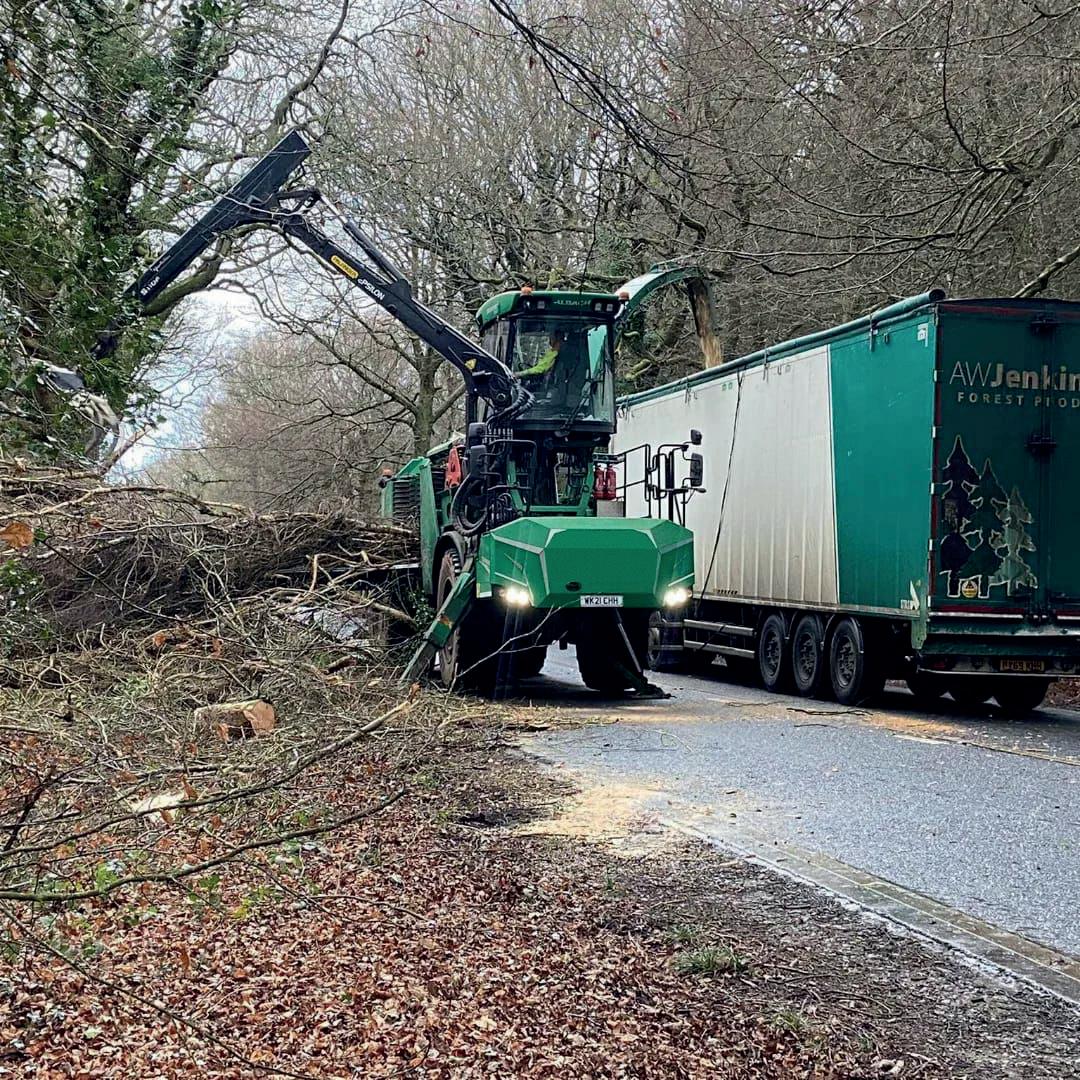
Mechanised Arboriculture
Tree H Health Surveys
Tree Maintenance
T Traditional Tree Surgery
Site Clearance & Mulching
Hedge & Verge Maintenance
T Tree Planting & Landscaping
Ash Dieback and other tree diseases continue to spread at pace throughout the UK and it is anticipated that up to 97% of all A could be lost. Ash and other species at risk are widespread in and roadside edges causing a considerable liability risk to lan associated with falling trees, especially adjacent to footpaths, highways, and property. Early intervention is always advised to minimise cost and
Our highly experienced team can deliver an industry leading Arboriculture service across the country. Euroforest Ltd lead the way in compliance and public relations setting a gold standard through our accreditation to ISO 45001 Occupational H&S Management and ISO 14001 Environmental Management Systems.
All of our projects are professionally planned and managed from start to finish. Euroforest offer a tailored approach to suit all requirements. We have pioneered Mechanised Arboriculture in the UK and always use the right equipment for each scenario, enabling us to achieve and deliver the best results. We use the following range of specialist machinery to allow us to safely dismantle any tree in any location:
• Mobile Elevated Work Platforms
• Heavy lift cranes
• Modified excavators with tree shears
• Specialised long reach machinery including Sennebogen, Liebherr & Merlo
Euroforest's specialist Arboriculture teams offer a bespoke service. From initial site appraisal through to completion and replanting we can offer a service that puts the landowner centre stage while always minimising costs and maximising any timber revenues. If you wish to find out more, please visit our website or call our Head Office.
For far too long, productivity in English woodlands has been side-lined as a policy objective. As a result, tree planting targets have been routinely missed, the quality of the establishment of woodland creation has often been poor, and a generation of wood growth has been lost.
Importing 80% of our wood products is not sustainable in the long term. As construction and other industries continue decarbonising, the World Bank forecasts global timber demand will quadruple by 2050, global competition for timber will intensify, and the availability of UK-grown wood is forecast to drop significantly in 2040.
To confront these challenges and realise the many opportunities that stem from a vibrant forestry and wood sector, we must take productivity back up to its rightful place. This has to be one of the key objectives of woodland creation in England, alongside biodiversity gain and
The proposed National Wood Strategy for England (NWSE) has a single focus on the planting, growing, harvesting and processing of conifer and broadleaf trees in England for the production of timber and other wood-based products, and where possible, the reuse of wood.
The publication is being spearheaded by the England Forest and Wood Based Industry Leadership Group, created and facilitated by Confor. It comprises industry leaders in the wood supply chain, as well as representation from DEFRA, Forestry Commission and Forestry England.
Tom Barnes, Managing Director of Vastern Timber, and Andy Leitch, Deputy Chief Executive of Confor, will author the NWSE. Speaking at Timber! Why the UK needs the wood – and the trees (Confor’s policy conference) in December, Tom said: “We only get one chance at this. The political landscape is such that we have an opportunity.”
Covering a 40-year period, the strategy
tion and growth in a sector that can contribute positively to net zero, biodiversity gain, housing and health.
The NWSE will outline the necessary steps for increasing the nation’s wood production and utilisation. At the same time, it will highlight the benefits of productive forestry and the positive contribution this will make to the country’s strategic objectives.
The hope is that the strategy will usher in a change of attitude towards growing and harvesting trees for wood production, and the greater utilisation of homegrown wood for added value and low carbon products. It will argue that such a shift in attitude will unblock restrictions, unlock private capital, and realise the full potential of English woodlands and forests.
The NWSE is due to be published on 31 March 2023. An early draft of the strategy, setting out the scope of the document, is available to view online: https:// bit.ly/3HIbYcD.

A new strategy outlining the necessary steps for increasing wood production and use in England is due for release in March 2023.





New evidence published by Forest Research has put an economic value on the vital role woodlands play in helping to prevent flooding.
The study, jointly funded by Scottish Forestry, Forestry Commission and the Welsh Government, estimates that Britain’s trees contribute over £400m annually through their capacity to store moisture and slow down run-off water after heavy rain.

With the prospect of wetter winters and more intense rainfall in summer due to the effects of climate change, the ability of trees to reduce flood risk is becoming increasingly important. Putting a monetary value on this ‘ecosystem service’ helps flooding authorities better understand the true savings that woodlands are making in reducing flooding.
Pat Snowdon, Head of Economics and Woodland Carbon Code at Scottish Forestry, commissioned the research. He said: “Climate change is bringing many global challenges. Our weather patterns are changing and we can expect wetter winters and more intense rain in summer. This brings the very unwelcome risk of more flooding.
“Woodlands have long been associated with an ability to reduce flooding. This research provides new data that fills a major evidence gap on the economic value of woodlands.”
Forests help to reduce flooding in numerous ways, in what is referred to as a

‘sponge effect’. Firstly, evaporation from leaves and branches helps to reduce the amount of rainfall reaching the ground. This process, known as interception, is significantly greater for woodland compared to other land use types.
Secondly, the soils within forests receive, store and delay water, helping to reduce rapid run-off and peak flows.
Finally, the presence of trees, shrubs and large woody dams along rivers and on the floodplain creates a barrier effect that slows the passage of flood waters downstream, in addition to delivering biodiversity benefits.
As a result, tree planting can significantly affect the volume, pathway and timing of surface run-off, reducing the risk of downstream flooding. Responsible forestry management practices help to maintain and secure this key environmental service.
Forestry Minister Trudy Harrison commented: “Communities across the country know all too well the potentially devastating impacts of flooding – from damage to homes and businesses and the disruption
of critical infrastructure to the tragic loss of life.
“This report provides the best picture yet of the integral role that our trees, woodlands and forests play in protecting at-risk communities from flooding. With more severe weather events forecast in the future, there is even more incentive to accelerate our tree planting efforts in line with our ambitious target to treble planting rates in England.”
The government is investing a record £5.2 billion over six years in around 2,000 flood and coastal erosion schemes to better protect communities across England, with one in six properties at risk of flooding.
“The warning signs of the climate crisis are stark and mounting – with greater rainfall, higher tides and more violent weather bringing heightened risks of serious flooding over the years ahead,” stated Sir James Bevan, Environment Agency Chief Executive. “The hard flood defences which the Environment Agency builds and maintains all across the country are part of the solution. So too are Natural Flood Management techniques such as tree planting, which we are already using to slow the flow of water and help protect homes and businesses.
“By harnessing the power of nature, we can tackle the twin challenges of biodiversity loss and climate change – whilst simultaneously reducing the risk of flooding to vulnerable communities.”
Findings highlight the importance of woodland expansion to protect at-risk communities from the consequences of heavy rainfall.
“WOODLANDS HAVE LONG BEEN ASSOCIATED WITH AN ABILITY TO REDUCE FLOODING. THIS RESEARCH PROVIDES NEW DATA THAT FILLS A MAJOR EVIDENCE GAP ON THE ECONOMIC VALUE OF WOODLANDS.”
Entries are now open for Scotland’s Finest Woods Awards 2023 with a renewed focus on sustainable forest management.
Scotland’s ‘Tree Oscars’ return for 2023 after a hugely successful 2022 and with climate change and sustainable forest management at their core.
The prestigious Scotland’s Finest Woods Awards will this year see a renewed focus on climate change after last year saw winners range from a couple who planted 14,000 trees on a rocky peninsula in the Western Isles to a primary school which moved 80% of learning outdoors during the pandemic.

Jean Nairn, Executive Director of Scotland’s Finest Woods, said: “This year will see the Climate Change Champion award return as the world looks towards a warming planet and the urgent need to take more action. The wonderful efforts across Scotland to use forests and woodlands
to mitigate, adapt and educate everyone about the climate crisis will rightly be recognised.
“It is important that we continue to appreciate the work done across different sectors to improve our forests and woodlands, which have an incredibly important role to play. They allow us to grow timber for construction rather than having to import it, improve farming, enhance landscapes and make space for recreation.
“And the huge bonus is that it also allows biodiversity to increase and helps tackle climate change.”
With continued Scottish Government
support for ambitious tree planting targets, organisers hope for another exceptional set of winners in 2023.
Environment Minister Máiri McAllan, who presented the 2022 awards to winners at the Royal Highland Show, is looking forward to this year’s accolades. “Scotland is home to some fantastic forests and wonderful woodlands – with equally wonderful people caring for them,” she said.
“We enjoy an international reputation for the positive way they are managed, and the awards are a great showcase for all the hard work undertaken by woodland managers both large and small.”
The Climate Change Champion Award has been developed in partnership with Forest Research, who will again provide expert judges in 2023. Other popular categories are also returning, including the three Quality Timber Awards, the New Native Woodlands award sponsored by Woodland Trust Scotland, and the Community Woodlands awards.
Entries must be submitted by 23:59 on Friday 31 March. For full details, criteria and entry forms, visit www.sfwa.co.uk.



A new timber industry net zero roadmap aims to accelerate the productivity, sustainability and innovation of the sector to better meet the needs of a low-carbon world.

The Building Centre in London played host to the launch of Timber Industry Net Zero Roadmap, a report encompassing both domestically produced and imported timber, on 24 January.
Commissioned by Timber Development UK (TDUK), in collaboration with Confor and 10 other UK timber trade associations, it seeks to identify and measure carbon emissions across the whole supply chain. The roadmap has shown that the timber industry is responsible for 1,575,356 tonnes of CO2e territorial emissions – which is about 0.35% of the UK total.
This is low compared to other manufacturing industries, such as UK steel production, which is responsible for 12 million tonnes CO2e (2.7% of UK emissions), and concrete, which is responsible for 7.3 million tonnes CO2e (1.5% of UK emissions) and reinforces the argument that using more wood will help reduce atmospheric carbon.
The report also calculated that there are 3,655,715 tonnes CO2e of imported embodied emissions, which comes from the processing of wood products in the country of origin. When that is factored in, the whole timber industry is responsible for about 0.68% of the UK’s total emissions.
One of the key aims of the roadmap, according to TDUK Sustainability Director
Charlie Law, is to challenge the misconception that as the timber supply chain comes from a low-carbon base, there are few opportunities for the timber supply chain to influence their emissions.
“There are some really quick wins in there for businesses – wherever you are in the supply chain – which can be put into practice now. And if you reduce your carbon, you reduce your costs.
“If you change the energy source for heat for your factory processes, reduce the waste from your product manufacture, or reduce your energy use by using better lightbulbs – there are literally thousands of ways both big and small you can start reducing your emissions.
“This includes for the single biggest contributor to the timber industries carbon profile – transport. While there aren’t yet many fully electric HGV options to remove these emissions, there are ways to be more efficient. And if you’re using less diesel, you reduce your emissions and your fuel costs.“
The most important first step, he said, is making sure you can accurately count your carbon emissions. This is why the roadmap
is being rolled out with both free, and recommended, tools to help businesses better understand their emissions profile.


“Once you have an emissions profile for your business, you see not just your environmental impact, but also your operational inefficiencies. From here you can start your business on a pathway to be more competitive in a low-carbon market.”
The roadmap document features 10 ‘policy recommendations’, including the importance of tree planting as a means to offset remaining emissions and that the industry should support targets/initiatives to increase domestic wood production and expansion of the domestic woodland stock.
Confor Chief Executive Stuart Goodall spoke at the launch event and welcomed the report. He outlined the work that Confor is undertaking, focusing on the domestic forestry and wood processing industry and seeking to chart the best route to net zero. This roadmap will be discussed with governments across the UK.
Stuart noted that while planting more productive forests and producing more domestic timber will help achieve net zero, governments will still look to businesses in the industry to reduce their own emissions, manage woodland to make them resilient to a changing climate, and transform product supply chains to adopt circular economy principles.
The domestic timber supply chain is well placed to be a leading sector in transitioning to a low-carbon economy, and by taking the initiative the aim is to work with governments to ensure that reducing carbon goes hand-in-hand with supporting the future success of the sector.
This work will be overseen by a task and finish group of members chaired by Confor Chair Lord Ian Duncan with the support of consultant Eilidh Forster, who carried out an analysis of the domestic supply chain for Confor in 2022.
You can download the TDUK Timber Industry Net Zero Roadmap for free at https://bit.ly/3Hu1BZD.











Since the COVID pandemic, we have all become familiar with using lateral flow tests as a quick & easy way of testing for the virus. Similar tests are also available for testing plants/trees for pathogens.
Pocket Diagnostic are the UK leaders in producing plant health rapid lateral flow tests which are unrivalled in terms of sensitivity and reliability. They offer a simple & rapid test specifically for Phytophthora spp., Potato Virus Y (PVY), Erwinia Amylovora (Fireblight) and Ralstonia Solanacearum (Bacterial wilt, Brown Rot). In just 10 minutes you can confirm whether a tree/host plant is positive or negative for the pathogen.


Phytophthora (name derived from the Greek ‘plant destroyer’) species are microscopic, fungus-like organisms. After honey fungus, Phytophthora root rot is arguably the most common cause of root and stem base decay of a wide range of trees, shrubs & plants. The species causing root and stem base decay are found within the soil, where they may survive for many years in the absence of a host plant. The organism attacks the root system and reduces the root area available for water and nutrient uptake and therefore above ground symptoms often mimic water/
environmental stress. There are a number of different Phytophthora species, all causing very similar symptoms. Potato seed, herbaceous perennials, bedding plants, soft fruits, pot plants and even bulbs can also be affected, in addition to woody plants. There are often no definitive above ground signs of infection –particularly in the early stages - so taking samples for laboratory testing has been critical for detection and management. Consequently, the availability of a rapid & accurate field test for Phytophthora is a very useful tool indeed.
An early diagnosis allows you to take action and save time, money, and TREES.

The test involves simply gathering a sample of living material from the plant i.e. leaf, phloem tissue, stem or root;

· Add to the buffer solution provided (which also includes several ball bearings to macerate the tissue)
· Shake vigorously for approximately a couple of minutes


· Allow the solution to settle and add 2 drops of the liquid onto your test strip. Result displayed within 10 minutes.


· Only one test per plant will be conclusive if the correct testing procedure is followed.



The Most Important Advantages Of All
Profit margins are being squeezed across all industries for a variety of well-documented reasons. As a result, streamlined and cost-effective processes and procedures are sought to assist in achieving healthy profit margins. It is in this area where rapid tests could benefit those looking to reduce the cost of plant disease management and streamline their activities with the introduction of an easy-to-use and efficient testing tool.
Because rapid tests produce in-field results in minutes, management strategies can be implemented faster than if a sample was sent to the lab. This quick decision making could be a clear advantage when attempting to maintain yield.

Because a rapid test eliminates the need to send every sample to the lab, the cost per sample can be reduced. For example, if you need to test ten samples, the cost of laboratory testing could reach the £100s. Testing ten samples with a rapid test could cost less than £100.
Rapid Lateral flow tests for:
Phytophthora

Potato Virus Y
Erwinia Amylovora
Ralstonia Solanacearum
For more information
01373 475540 Or visit: www.sorbus-intl.co.uk

































Iam a firm believer that children need to know more about forestry and, from many conversations with Members, this is not a unique point of view.
Schools are busy places. They have a complex curriculum to deliver, covering hundreds of topics under the guise of the broader subjects of science, technology, engineering and maths (STEM). There is no space for a forestry topic!


However, forestry can be integrated into those subjects, and schools love a guest speaker. That’s why the STEM ambassador network is a great way to get forestry into classrooms.

I became a STEM ambassador last year. The process was simple: complete the online form, including a Disclosure and Barring Check (DBS), and work through the induction pack. If there’s a problem, the STEM staff are usually able to sort it quickly.
The induction is not scary, it is mostly focused on safeguarding for you and the children. Safeguarding itself is nothing to be worried about, most of it is common sense. Some people have reported issues during the sign-up process but, to overcome this, Lantra are planning to hold a couple of online workshops to support people signing up.

There are several ways for a school to find you. The easiest way is to tick the subjects that you feel you can help a school with and the age range with



which you are happy to engage. The website then compares that with schools that have listed an activity they want support with. I cherry pick the ones that I think have the closest links to forestry, and I can fit into my calendar – there’s no obligation to take on every match.
STEM also have their own activities that you can sign up to take part in. For example, a short career presentation called ‘This is ME’ that you join online, deliver a five-minute talk, and then get on with your day job. This works really well and, once created, the threeslide presentation is ready to be used time and again. Alternatively, you can create your own activity. Mine is a career talk titled: ‘Forestry is more than a lumberjack’. So far, I have presented it five times, to different classes in different schools.
I use the exact same slides each time and tweak the verbal part depending on the audience -generally it’s very similar. I describe the forestry cycle and potential job roles within it, debunk myths about deforestation, and high-
light the benefits of woodlands. I include current vacancies with potential salaries and ensure they understand that there are roles across the country.
I always finish with a next steps guide, colleges and universities that offer forestry courses, and advise them to make the best of school (something I remember being told and brushing off but feel that I should say to the



Though the offer was only open for a month, I had 12 enquires from across the country. With more Forestry STEM ambassadors we could reach into even more schools. The presentation I created is available for Confor Members to adapt and could be delivered by anyone with good forestry knowledge.
Going forward, I would like to create more offers that link to the curriculum e.g. Year 4 children in England have to learn about habitats, and in Year 6 they need to use a identification key. Both lend themselves to forestry but if we don’t make new resources available and easy, schools will continue to use the same materials as previous years, which will not result in the change we want.


If you are interested in becoming a STEM Ambassador, contact richard.hunter@confor.org.uk.




From the meticulous preservation of historical landmarks and wildlife conservation to tourist attractions and the management of expansive woodlands, few organisations are as diverse as National Park Authorities. Eleanor O’Neill spoke to the teams behind the scenes about the impact and challenges of their work.
At just 693km2, Exmoor is one of the UK’s smallest National Parks. Even so, it is home to the longest stretch of coastal woodland in England and Wales, over 16,000 veteran trees, the highest beech plantation in England, rare whitebeam that is unique to the Park, and even England’s tallest tree.
The Exmoor National Park Authority (ENPA) oversees everything, including the famous free-living Exmoor ponies that roam the moorland.
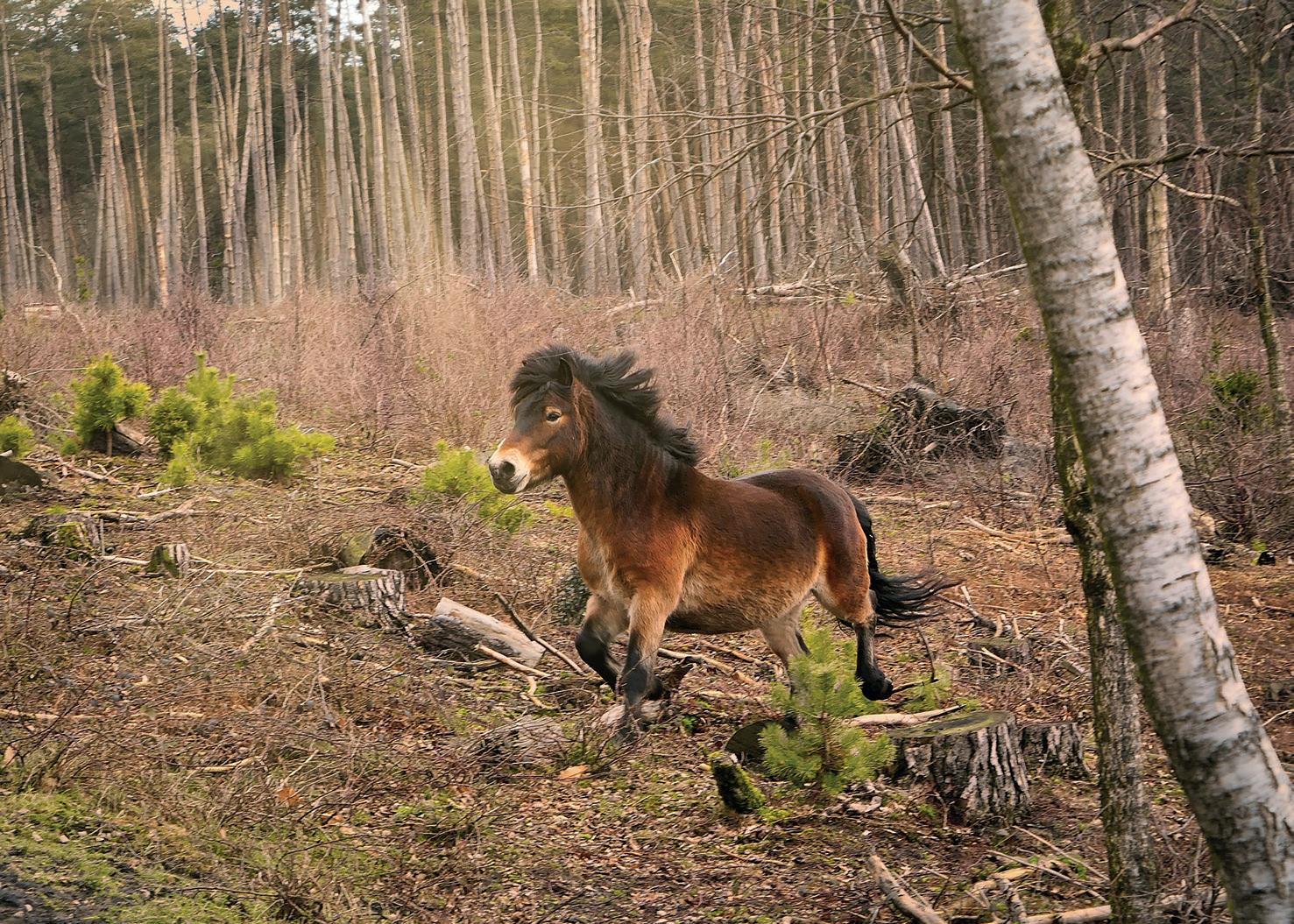
At the opposite end of the country, the Cairngorms National Park in Scotland stretches over 4,528km2, making it the UK’s largest National Park.
Established in 2003, the expansive Park contains a quarter of Scotland’s native forest, four of the five highest mountains in the UK, and Scotland’s largest extent of bog woodland - a European priority for conservation. 25% of the UK’s threatened animal, insect, fungi and plant species have habitats here.
The Cairngorms National Park Authority
(CNPA) works alongside the local authorities that operate within the Park to deliver on the aims set out in the National Parks (Scotland) Act 2000:
1. To conserve and enhance the natural and cultural heritage of the area.
2. To promote sustainable use of the natural resources of the area.
3. To promote understanding and enjoyment (including enjoyment in the form of recreation) of the special qualities of the area by the public.
continued on p34
4. To promote the sustainable economic and social development of the area’s communities.

In addition to the statutory duties of planning and outdoor access, CNPA provides a number of services to support the Park’s businesses, landowners and local communities and, despite the vast differences in size between the Parks, ENPA has a similar outlook.
“Exmoor is a living landscape – home not only to some of the most outstanding landscapes in the UK, but also to a resident population of approximately 10,000 and over 1,300 businesses,” said Dan James, Rural Enterprise Manager.

The Cairngorms National Park is home to 18,000 people living in the numerous towns and villages in the areas of Aberdeenshire, Angus, Highland, Moray, Perth and Kinross.


There are many commercial operations in the Cairngorms, including those in the creative sector, food and drink producers, and those in the farming and hospitality industries. Rural management and getting the balance right between economy and environment is a key element of the latest Cairngorms National Park Partnership Plan.
“Our relationships with Park organisations such as GrowBiz and the Cairngorms

Business Partnership are very much based on collaborative working, which is really important to ensure Park businesses are consulted and given the support they need to thrive,” stated a CNPA representative. “The latest Partnership Plan covers issues relating to nature, people and place and is all about creating a park for all.
“This is the largest, most ambitious Partnership Plan ever created, with major activity including peatland and woodland restoration, affordable housing, green skills, and a wellbeing economy - and represents a vision for what the National Park could look like by 2027, and indeed by 2045 when Scotland aims to have achieved net zero.
“Achieving the targets set out in the Partnership Plan won’t be without chal-
lenges. We’re relying on all National Park communities and more than 100 partner organisations coming together to make it work - but great progress is already being made.”
While the preservation of the natural environment is the primary purpose of National Parks, impact on and benefit to the local area and its residents is a key concern.
CNPA continued: “National Park status helps provide a clear sense of regional identity and pride in the place people live and work. It brings direct economic impact to the Cairngorms National Park for work that benefits communities such as visitor management investment, ranger services, and the 15% premium on woodland creation through Scottish Forestry.
“National Park status also provides significant employment opportunities, both in tourism and associated activities and in conservation activities such as peatland restoration, woodland creation and deer stalking.”
Even with a wide breadth of commercial ventures contained within the Cairngorms and Exmoor, visitors are, by far, the biggest earner for National Parks, big and small.

“Tourism dominates our rural economy, accounting for two thirds of employment,” Dan stated. “Together with farming (our next biggest sector), it is key in achieving the twin purposes we have as a National Park to both conserve and enhance the landscape, whilst promoting opportunities for the public to understand and enjoy this special place.
“Exmoor attracts over 1.3 million visitors each year, spending over £130m. The landscape (and all within it, such as moorlands, woodlands and the historic environment) is the primary attractor and so our task is to work with our partners to find balance in
order to manage tourism responsibly.
“We aim to offer a warm welcome, whilst we protect the special qualities of the National Park, which in turn underpin Exmoor’s economic viability.”
Tourism is vital to the Cairngorms National Park. It accounts for 30% of the economy (GVA) and 43% of employment.
“We currently have two million visitors annually. Over half of those visitors, and two thirds of international visitors, say that National Park status is an important influence in their decision to visit,” the representative noted. “However, it’s crucial that we work with visitors and local tourism businesses to ensure the impacts of tourism are positive, and that they do not adversely impact on the things that attracted them in the first place – landscape, wildlife, culture, tranquillity.”
These priorities reflect what is commonly known as the Sandford Principle.

National Parks in England have dual statutory responsibilities, as mentioned by Dan above, to conserve and enhance the natural beauty, wildlife and cultural heritage of the National Parks, while also promoting opportunities for the public to enjoy and benefit from the special qualities of the Parks. A similar commitment holds true in Scotland.

The Scottish Government has committed to establish at least one new National Park in Scotland by the end of this Parliamentary session in 2026, as part of the Bute House agreement with the Scottish Green Party and the Programme for Government.
NatureScot are due to publish an analysis report of the stakeholder consultation on the role and approach to National Parks in Scotland later this month.
The Sandford Principle states that, in cases where these purposes conflict with each other, the first priority should be natural conservation and enhancement efforts. This has sometimes led to a belief that “preservation trumps recreation”, and that the commitment to this ideal can stall or obstruct new developments that may benefit Parks in the long term.

In reality, good management and compromise can often reconcile the differences.

For example, when the Yorkshire Dales National Park Authority in 2020 unveiled a 10-year strategy to increase its woodland, Ian McPherson, the authority’s Member Champion for the Natural Environment, said: “ The new strategy acknowledges the role that existing conifer plantations play within the Dales and careful management of them will be key to survival of the native red squirrel.
“Creating further conifer plantations could be possible but only when they provide tangible benefits to the natural beauty, wildlife, and cultural heritage of the national park.”
“We see the protection and conservation of history, heritage, and environmental considerations as a central part of the overall development of the Cairngorms National Park,” said CNPA. “The Cairngorms National Park Local Development Plan is designed to ensure that development in the National Park is appropriate, in the right place and has policies to help guide future decisions on planning applications. It aims to ensure there is sufficient land for housing, jobs and services, while protecting the landscape and environment that makes the Park so special.
“National Park woodlands have been expanded by over 5,000ha over the past five years, and over half of this by natural regeneration. One of our objectives is ‘the right tree, in the right place for the right reason’ - getting the balance right is critical to overcoming obstacles in development.”
Thomas Thurlow, ENPA Historic Buildings Officer, commented: “The historic environment shouldn’t be seen as an obstacle to development. The landscape of Exmoor has been shaped by humans over thousands of years and is vital to our understanding of how the landscape, and the way it has been used, has changed and developed over the centuries.
“It should be taken into account when considering development works but, more often than not, any impact the development may have can be mitigated against. In planning, the harm caused to the historic environment by development is measured against public benefit.
“If the harm caused by the development can be justified, then it must also provide a public benefit that outweighs the harm. That is the same nationally, not just in National Parks.”
Farmers across Northumberland have been part of a pilot study into the expansion of agroforestry across farmland.
Apilot study conducted in Northumberland has identified how the region could lead the way in the expansion of agroforestry in its farmland –bringing real benefits to farmers, animals and the rural economy.

Conducted by Newcastle University, in partnership with Forestry Commission and Great Northumberland Forest, the project examined the challenges faced by farmers when adopting agroforestry and what support they require to make it work.
Agroforestry has been proven to provide a real range of benefits, including increased shade and shelter for animals and crops, increased wildlife diversity on farmland, better soil quality, and improved water flow. However, just 3% of farmland in the UK is used for agroforestry, according to a recent report by the Woodland Trust.
Led by Dr Marion Pfeifer, Associate Professor for Landscape Ecology and Management, and PhD researcher Eleanor Moore at Newcastle University, this study included visits to 13 farms in Northumberland, interviews with landowners, and a workshop with farmers, representatives of the wood products industry, and stakeholders from the Woodland Trust and the National Farmers’ Union.
The research found a real interest amongst the region’s farmers in planting
trees as part of silvopastoral systems –which involves trees planted on land with livestock – but highlighted that protecting saplings from animals such as deer and hares presented challenges. The findings recommend work to increase understanding of different types of agroforestry in the UK, and looks to set up a group to support farmers in the region.

Dr Pfeifer said: “This pilot study, generously supported by Newcastle University and the Forestry Commission, is a first step towards sustainably and effectively increasing tree coverage in England’s North East.
“We have a proud and diverse farming community that already demonstrates a growing interest in agroforestry as one tool to be integrated into the management of their farm. We now need to establish robust evidence that can support advice to farmers on what to plant, when and where, to maximise benefits provided by agroforestry and mitigate for any potential negative impacts such as increased disease transmission.”
“It’s been great to have been involved with the study,” added Mark Child, Programme Manager at Great Northumberland Forest. “Agroforestry increases tree cover and enriches farming practices, providing multiple benefits.
“We are working with sites across the
county that combine trees with sheep, cattle and horses. The Great Northumberland Forest team supports landowners and managers who want to explore this option and we have funding available to deliver at a variety of scales.”



The research findings further call for more integration of relevant government policies, and increasing and maintaining funding for agroforestry as part of integrated farm management.
To maximise the benefits of agroforestry, researchers highlighted the need for more tailored and accessible advice for farmers.
Agroforestry grants – as part of Environmental Land Management (ELM) schemes – are currently being designed for launch in 2024. The government is looking at a wide range of agroforestry practices, including silvopasture, silvoarable, windbreaks/shelterbelts and riparian buffer strips.
This range of agroforestry systems will allow for greater flexibility and will ensure the environmental sustainability of agricultural land.
Jim O’Neill, Agroforestry Advisor at the Forestry Commission, said: “We need to be able to see far beyond the planting of trees in woodland only and to realise the huge benefits of tree planting on agricultural land – not only for the environment but for farmers and their livestock.
“This important study working with the fantastic rural communities we have in Northumberland is an exciting start to looking at how we can work hand-in-hand with farmers to support the expansion of agroforestry in a way that works for them. I look forward to continuing this work and seeing the North East pave the way.”
“THE RESEARCH FOUND A REAL INTEREST AMONGST THE REGION’S FARMERS IN PLANTING TREES AS PART OF SILVOPASTORAL SYSTEMS – WHICH INVOLVES TREES PLANTED ON LAND WITH LIVESTOCK”
Extensive range of compact tracked ‘Spider’ access platforms

Compact machines able to access difficult to reach areas
Manoeuvres through standard gateways and narrow paths
Track widening system and greater ground clearance
Established 1999
The UK’s longest established woodland tree cell grower
We offer British grown woodland trees, hedging and shrubs

Cell grown
Container grown
Field grown
Guards - Stakes - etc
Planting service available
Nationwide delivery service
Offering a comprehensive range of professional log & woodchip drying kilns for the timber industry. Along with kilns for sawn timber, pallets & fencing producers

KILN Services has been designing and manufacturing timber-drying kilns from its base in Essex for over 45 years. The company provides drying and heat-treatment kilns for all sectors of the industry, including softwood and hardwood sawmills, pallet manufacturing, fence-post producers, biomass fuel producers, modified timber and research facilities in universities and training colleges. In recent years, the market for kilns to dry biomass fuel has increased considerably. This has been driven by consumer awareness of product moisture and government initiatives to improve air quality, such as the Woodsure Ready to Burn accreditation scheme.

Please visit our website for more information www.kilnservices.co.uk t: 01621 785 935 e: kilnservices@btconnect.com
Kiln Services Ltd, Essex, CMO 8TE

When Andy Howard, a specialist in the installation of biomass boilers, and Sir Edward Milbank, owner of the Barningham Estate, joined forces at Pennine Biomass in 2012, it’s unlikely either thought it would lead to 600,000 trees being planted on Doddington Moor.

“I met Ed at an industry event,” Andy explained. “He was doing a small volume of woodchip from his estate’s forestry for a biomass operation on the main property.”


The Renewable Heat Incentive (RHI) for non-domestic buildings launched in 2011 and drove a sharp increase of heat pump and biomass boiler installations, something Andy was building a business out of. He recalls being repeatedly asked by customers where to source the woodchip from.

“We needed a wood supplier, [Ed] needed to know about the boilers, and so it made sense to team up. Pennine started from there. We became a successful installer of biomass boilers and a supplier of woodfuel.”


























While the partnership provided biomass en masse for Pennine, it became increasingly apparent that identifying suppliers for not just chip, but wood in general, was a real challenge facing the sector.
“By the time Pennine sold the biomass business, forestry was already our main focus,” Andy said. “We had already seen that the pinch point was the supply of timber. Demand was significantly higher than the market was able to supply.


“We saw an opportunity for new players and new woodland creation within that.”






The chance to capitalise on that opportunity followed in 2017 with England’s largest woodland planting scheme for 30 years on Doddington North Moor.
“Doddington came about from the estate that owned the land previously looking at biomass installations for their properties. They’d asked us to do an audit of how that might happen and, as part of that, we’d been round and looked at the whole estate.
“They said ‘if we put biomass boilers in, we want to be sustainable on timber. We’ve got a timber resource – because they had a variety of woodlands – but how do we become more sustainable?’”
Andy identified an area of the estate, half pasture for grazing, half overgrown upland heath, that had little agricultural value.




Eleanor O’Neill spoke to Andy Howard, Director of Pennine Enterprises, about the journey from biomass to biocarbon, via a 350ha planting project.
He suggested a productive woodland on the site could keep the whole biomass cycle within a single sustainable process.
“Ultimately, the estate decided that they weren’t going to follow that strategy. But then, when they decided to actually put that part of the land holding and the estate up for sale, it just seemed a natural opportunity to try and secure that piece of land for a tree planting project. And so it came to be.”
Doddington spans a total of 354ha, and an impressive 268ha is planted with a mix of Sitka spruce, Scots pine, and native broadleaves. The hope was that the site would stand as an example of what could be achieved with planting in the north of England.
More than five years on, that hasn’t materialised. Andy, who headed the negotiations with Forestry Commission, Natural England and the Environment Agency to secure approval for the woodland, is not overly surprised.
“The approvals process. That was by far the biggest challenge,” he admitted. “Doddington could have, and arguably should have, been the precursor to a change in the system to enable us to plant more trees and we’ve gone backwards. We’ve gone the opposite way because now there are more barriers in place.
“I do think the public sector are getting close to shooting themselves in the foot. People will give up, people will just say the system doesn’t work. I’d like to see it change but, to be honest, I don’t think it can and I don’t think it will.”
Though Pennine Forestry is now a wellknown private sector leader in UK afforestation, it was a brand new undertaking for them at the time.
“It was very easy to get to grips with it,” Andy said, reflecting on what he has learned about woodland creation and management. “Woodland is going to change over the years, so you’ve got to be able to
react to how it changes.
“A woodland takes decades to grow, and the climate is changing in those decades. You get pests and diseases that come and go, there are a whole range of factors that you’ve got to adapt to and work with.
“Walking away from a woodland for 35 years to let it grow, and then coming back to harvest it, unfortunately, isn’t going to produce the best outcomes anymore. Having a management plan that is active and spans multiple years is key.”
Further diversifying the business at Doddington now has Andy looking to the future with a new venture as CEO and Co-Founder of CSX Carbon.
“We sold the carbon from Doddington and realised, through that process, the challenges and issues that are preventing carbon and natural capital from being brought to the market.” Echoing the thinking that led him towards productive forestry, he added: “Market demand far outstrips the supply.
“That’s what led to the germination of the idea that’s become CSX Carbon. It’s about delivering a new mechanism for the audit and measurement of carbon from woodlands, peatlands, and the biodiversity gain. Using earth observation data to provide a transparent and verifiable audit trail that the corporates want and need, as opposed to the paper-based, expensive audit trail that exists at the moment.
“And, subsequently, also making it far more accessible and cost-effective for the landowner.”
A study published in December 2022 used 3D scanning techniques and analysis to assess the amount of aboveground biomass (AGB) of 815 trees in a UK woodland. The results indicated that UK woodlands could store almost twice as much carbon as previously estimated.


Lead author Professor Kim Calders of Ghent University said: “Currently, most estimates of forest carbon stocks are based on simple allometric models that assume that a tree’s size and mass increase at a steady rate. Our findings show that relying on these models is problematic, as they are not representative of UK forests.”

In response, CSX Carbon is funding the follow-on research of Biocarbon Europe Advancing Measurement Standards (BEAMS).

“The most fundamental part of it from the forestry side is updating the forest mensuration practices which are over half a century old, have not been updated since 1967, and are based on an algorithm that was never designed for trees in the first place,” Andy stated. “The blue book is based on a very small set of sample trees in the Lake District in the 1960s.
“The purpose of BEAMS is to produce a new set of allometric equations so we, as an industry, can genuinely understand AGB. Our research programme is underpinning the carbon measurements though which CSX will be bringing the improved measurement of carbon forward.”
A conifer plantation managed as Irregular High Forest at Stourhead (Western)
has been investigated by Butterfly Conservation to identify the biodiversity benefits of continuous cover stands.
There is a growing awareness that conifer plantations need to become more resilient and sustainable, including economically. This is particularly important in the face of the increasing threat of climate change and the negative consequences this has on forests and associated biodiversity.
Alternative techniques for managing conifer plantations are gradually being adopted across the UK in response to these threats. This includes the development of Irregular High Forest stands which confers wider benefits beyond the production of timber, including reduced soil disturbance and the provision of habitat for biodiversity.

The Stourhead (Western) Estate, located on the border between Wiltshire and Somerset, is renowned for its forwardthinking forestry management in conifer stands. Belonging to the Hoare family, the private estate has pioneered these new approaches and techniques.
Stands have a long history of conifer cover with planting undertaken in the 18th and 19th century on grassland and common land. Under the guidance of forester David Pengelly, the estate began convert-
ing its stand management fully to continuous cover forestry in 1997. Stand composition includes species such as Douglas fir and Sitka spruce alongside a limited broadleaved element, dependent on stand management history, which includes Alders and Oaks.


Conifer stands on the estate, along with the neighbouring National Trust Stourhead estate, are on a continuum from having a regular structure (Stage 1 even-aged stand), regular structure but increasing understorey regeneration (Stage 2), to a developed irregular high forest structure (Stage 3 mixed age and species) (see figure 1)
The aims of management at the site are to promote diameter growth of trees with high timber value, until they reach their maximum output. Stand stocking is held at a level that allows patchy light levels to reach the forest floor, promoting sporadic regeneration and the development of a varied understorey, which consists of trees, shrubs, flowering plants and grasses.
This is further enhanced by the promotion of mixed species stands comprised of conifer and broadleaved tree species. Over time, Irregular forestry promotes a highly
varied vertical stand structure leading to heterogeneity and complexity at the stand level.
The biodiversity balance
Biodiversity responds to both the structure and species composition of forests so it is important to understand what forests managed under Irregular forestry can provide. Results from a PhD study investigating Irregular Forest management in a broadleaved woodland, undertaken by Dan Alder of Manchester Metropolitan University, at the Rushmore Estate in Dorset have been highly encouraging in this respect. However, there remains a need to understand how biodiversity responds to management under Irregular forestry in conifer-dominated stands.
To investigate this, Butterfly Conservation have carried out a research project on the Stourhead (Western) Estate and National Trust Stourhead Estate. The research project had three primary aims:
1. To determine the biodiversity found at Stourhead.
2. To identify habitat structures found at different stages of transition towards Irregular High Forest.
Figure 2: Mean basal area of the three stand stages included in the study. Error bars represent standard deviation.
3. To document the habitat structures that influence biodiversity.
Stands selected for study represented the three stages presented earlier in this article, although finding suitable Stage 1 stands on the site was challenging. Species groups selected for study included important woodland indicators such as plants, moths, bats and birds.

A total of 95 plots, 30m in diameter, were selected and we measured the habitat structure of the plot, such as basal area and canopy openness. We recorded the number of plant species and their cover: moths using battery powered portable
light traps, bats using acoustic recording devices, and birds on standard census tran(see figure 2).

The basal area of the stands decreased from Stage 1 (mean = 40 m2ha) to Stage 2 (mean = 32 m2ha) and was lowest in Stage 3 (mean = 22 m2ha). This differs slightly from the stand development model, where the basal area is expected to increase slightly in Stage 3 from Stage 2. This reflects two factors, first the requirement to remove diseased larch and ash trees infected with Phytophthora ramorum and Ash Dieback respectively, and second the current stage in the selection felling cycle.

For instance, the Stage 3 stand requires approximately another 30 years until equilibrium is reached but displayed the highest degree of habitat complexity. Lower basal areas are important in facilitating this higher complexity as it allows the development of an understorey.
The understorey is comprised of bracken, bramble and tree regeneration, primarily Western Hemlock. The latter requires periodic thinning to promote higher value timber such as Douglas fir.
species frequently encountered in the stands. The caterpillars feed on lichens.



Another key characteristic of the Stage 3 stands was their heterogeneity, with the average tree diameter at breast height, canopy openness, broadleaved canopy cover and number of tree species all displaying more variation in Stage 3 stands. A component of broadleaved trees within co-
nifer stands, as displayed particularly in the Stage 3 stand, is important for biodiversity as they can support a wider range of native species than introduced conifer species.
For instance, 129 species of larger moth feed on Oaks and 55 on Common Alder, whereas only six species feed on Douglas Fir, two on Western Hemlock and 13 on Sitka Spruce.


We recorded a surprising level of biodiversity at Stourhead, despite the conifer dominated nature of the stands and plantation origins on grassland. The species totals included a selection of scarcer species such as the Waved Carpet moth, Barbastelle and Marsh Tit. A total of 128 plants, 248 moths, 13 bats and 26 bird species were recorded.
Regarding moths, this total includes 27% of the larger moths associated with woodland, a higher number than expected as surveys were limited to a two-week
continued on p42
continued from p41
period in July. The number of bat species recorded, using acoustic detectors, was particularly impressive and is equivalent to 76% of all UK resident species (see figure 3).
The project found four habitat structural features were particularly important for influencing biodiversity including lower basal area, higher cover of broadleaved trees, patchy canopy openness and higher quantities of deadwood. The study found that lower basal area (on a scale of 10-60 m2ha) was better for promoting higher plant and bird diversity.
This occurs as lower basal area is positively related with a more open canopy and allows greater levels of light to reach the forest floor. This promotes the development of an understorey, a feature of importance to certain woodland biodiversity e.g. warblers.
The second habitat feature of importance in Irregular forests was the percentage canopy cover of broadleaved trees. It was found there was a positive relationship between higher canopy cover of broadleaved trees and moth species that feed on broadleaved trees and three bat species. Encouraging broadleaved trees interspersed within a conifer stand therefore provides an immediate biodiversity benefit, providing suitable foodplants for moth species and greater invertebrate prey for bat species.
Thirdly, the project found that the maintenance of a variable canopy with patchy openness provides habitat for species groups with opposing needs. For instance, bat species displayed a preference for more open conditions whereas moths were generally associated with closed canopies.
The heterogeneity of Irregular forestry provides a range of canopy openness conditions along a gradient of relatively open canopy with understorey to closed canopy woodland and mature trees with old growth features such as deadwood snags.
Finally, stands that contained greater quantities of both fallen and standing deadwood promoted activity of bat species, particularly the Common and Soprano Pipistrelle. Deadwood provides both roosting locations and sources of food for the species, with deadwood known to be an important habitat for invertebrate species.
The findings from the project indicate that sympathetic management of conifer stands at low basal areas can deliver for biodiversity. As the stands at Stourhead continue to develop, the habitat conditions will further improve. Importantly, if the adoption of Irregular forestry was scaled up and habitat features identified as part of this research enhanced, it could potentially have positive consequences for biodiversity in conifer plantations.
Research undertaken by Patrick Cook, Dan Alder, Lisbeth Hordley, David Pengelly and Nick Hoare.

Over the last 150 years, England’s red squirrel (Sciurus vulgaris) populations have significantly declined. This iconic species is now classed as nationally endangered.
On 21 January, Red Squirrel Appreciation Day, the UKSA announced a framework of strategic actions to underpin and guide red squirrel conservation and recovery in England. This will make a positive contribution to the dedicated conservation efforts already taking place and compliment the red squirrel action plan or strategies underway in Scotland, Wales and Northern Ireland.
The England Red Squirrel Action Plan (ERSAP) 2023-2028 has four key aims:
• Protect, identify and strengthen red squirrel populations across the current range
• Expand the current range of red squirrels
• Support and improve collaborative action at all levels
• Promote better understanding and support for red squirrel conservation across England

Delivering the actions needed at the scale required to achieve these goals is a complex and significant challenge.
Kay Haw, Director of the UK Squirrel Accord, said: “Red squirrels are an important part of England’s natural heritage. Working together we can ensure they have a positive future by mitigating the tragic declines in their numbers.
“While human actions endangered these much-loved mammals, it is also human actions that can reverse their fate. It is only thanks to the fantastic efforts of all those involved in red squirrel conservation that we still see them on the English mainland today. The new England Red
Squirrel Action Plan aims to build on this valuable work and ensure our only native squirrel survives for future generations.”
Mike Denbury, Project Manager of Red Squirrels Northern England, added: “The England Red Squirrel Action Plan provides a much-needed framework to guide red squirrel conservation at a time when the threat of extinction is very much a reality.
“The plan sets out core objectives to use existing knowledge and experience to act as a catalyst for change. It aims to raise awareness of the threat to red squirrels and bring this important message to new audiences. The plan also welcomes collaboration with and work alongside the organisations and community groups that are working tirelessly to ensure the recovery of this iconic species.”
Successful delivery of the plan will depend on strong collaboration between stakeholders at local and national levels, including community groups, conservation organisations and government agencies. Effective communications that raise awareness of and engagement in red squirrel conservation are also vital. A new stakeholder group is being set up to start delivering the actions.
The plan will be reviewed and updated in five years. During this time UKSA will work with various stakeholders to achieve an increase in red squirrel range and time spent conserving red squirrels.
The government, alongside the Forestry Commission and Natural England, has worked with others in the UKSA partnership to develop the action plan and will support its implementation through actions such as habitat creation to protect the long-term future of this iconic species.











Istarted my career in the motorsport industry as an engineer, but I always felt a contradiction between my love for cutting-edge technology and my deep desire to see the natural world protected. After being exposed to forestry by a chance meeting 10 years ago, I found myself fascinated with the challenge of understanding complexity within a forest environment.
In pursuit of my interests, I founded LandScan, a UK company focused on developing digital approaches to problems such as measuring and counting in a forestry setting. We tend to use drones to do this, building accurate 3D digital representations from which we extract actionable information to help in forest management decisions.
This open letter to the sector aims to stimulate a debate as to how the industry can gain the highest value from this approach.
We can do several things with drones that are hard to do from the ground. Firstly, the fact that our cameras fly above the canopy and are unobstructed by the myriad objects that clutter the forest floor means it’s much easier to view the forest writ large.

Secondly, we capture and reconstruct a three-dimensional ‘digital twin’ of the whole forest at a moment in time. This data is then available forever, for any kind of computer analysis the industry invents. By using computers to measure and record many millions of data points, we can produce evidence-based information and ensure that any generated figures and statistics about a forest are trustworthy and repeatable.
Thirdly, we can leverage technologies which expand the range of the human senses. We can use wavelengths of light outside normal human vision to infer differences in vegetative health, for example, before they become visible to our eyes. We can also shoot lasers through physical objects, allowing us to see through canopies and leaf cover!
These extensions to human senses allow for better monitoring of our forests. It’s very
important at this stage to note that (at least in the author’s opinion) drone operators cannot – and should not - aim to replace all traditional and established forest management practices. People will always need to visit and assess the ecosystems in the intuitive way that only humans are capable of.
However, technology can add to our understanding by embracing the computa-
tional power of machines. The industry is already incorporating similar approaches but has not yet agreed on an aligned process and range of products.
Many of the larger forest management companies, for example, have diversified into offering a level of drone services. Smaller practices are partnering with specialised providers to offer the services without the large investment in training and equipment required. It is now for forestryfocused drone providers and the community to come together to understand the improvements, needs and challenges that can be resolved.
It is generally seen as good practice to first identify the questions when searching for solutions. The following examples introduce several ideas intended to stimulate discussion about how best to seamlessly integrate this approach into existing practices.
Perhaps some shared guidelines would
Computer Generated Photographbe useful for individuals and companies to understand when – and when not – they


might engage drone operations within their management and business plans.

• What data missing from on-ground monitoring could be analysed and exploited? For instance, could knowing the locations of trees showing signals of stress help when performing stand assessments?
• Could whole-forest distribution, density and height data (derived from aerial scanning) help to inform management decisions, for example in deciding when to thin?







a forest, is there a benefit to receiving or re-
emptor? Drone imagery is now becoming standard to showcase a site, but could this be added to by providing fully interactive 3D models, accessible from home?
• When engaging a new management company would there be a benefit in receiving an up-to-date forest scan as a standard part of the management plan creation?
• Could it be beneficial to encourage clients to submit their data to a national, open catalogue of forest models for research?
I believe that most private and commercial clients will come to expect scans as standard – for a combination of data interests, assuring compliance or simply for the majestic beauty of viewing their forest in high-resolution, printed and mounted on the office wall.

To borrow terms from E.M. Roger’s Diffusion of Innovation Theory, land and forest scanning is currently comfortably within the ‘early adopter’ stage and is starting to be picked up by the ‘early majority’. A coordinated effort to standardise compliant approaches, service expectations and useful outputs will encourage understanding and familiarity for the end user. Drone scanning will have to demonstrate benefits which are clear, immediate, and fit within existing business practices.
• How can the data be supplied in an easily accessible and standardised format?
• Which data derived from scanning could be useful to submit to a planting scheme, carbon credit applications and monitoring events, or natural capital assessments?

• How often should a site be scanned? There is of course a need to balance costs and benefits. A large commercial wind-stable and pest-free Sitka stand may not require intensive monitoring. A broadleaved forest undergoing transition to Irregular Silviculture standards may benefit from more frequent assessments.
• When considering whether to purchase
Evidencing areas of windblow can help with insurance claims and restocking planning.
• For those with CCF interests, is there value in a map predicting light penetration across the stand? What if we could produce a Marteloscope in, say, an hour, by performing a LiDAR survey and taking a vertical slice of the resulting data at breast height?
The above ideas may prove themselves to be only the hors d’oeuvres of what the technology can deliver. Some ideas will be transformative. Some ideas will not be feasible. Some management companies will exploit the new capabilities as early adopters, some may take a little more time.
In conclusion, digital mensuration techniques have the potential to add to the way we manage our forests. They can provide a cost-effective and efficient way to gather data and monitor the health of forest systems, allowing us to make better decisions about how to manage and conserve them. They can also provide valuable information to the forestry industry, helping to improve the yield and quality of timber, and increasing the sustainability of our operations.
However, the technology is still relatively new, and some people may be hesitant to adopt it. The key to realising the full potential of drones in forestry is to work together as a community, sharing knowledge and expertise.

With the right approach and careful implementation, we can all benefit from forest scanning. All that remains is to define the questions we want to ask.
If you wish to find out more or are interested in forming or contributing to a working group, please get in touch with Jamie at enquiries@landscan.co.uk.

The forestry sector remains buoyant despite the turbulence (national and international) that has characterised the past year, though a degree of caution has entered the market.
2022 saw a drop in the number of forests sold but a rise in forest prices of at least 15% on 2021. It’s a little more complex than the simple market forces of demand and supply: timber pricing has been affected by a hangover from Storm Arwen, the war in Ukraine, and volatile exchange rates while the review of the Woodland Carbon Code has not been received well by the market and has resulted in a softening of commercial conifer planting land prices.
However, it is a mature market underpinned by an understanding that there is a finite supply of forestry land and a global shortage of timber supplies; add to that the fact the UK is the second biggest importer of timber in the world by volume after China. As a result, the investor is keen to secure increased ownership of UK forestry and believes that the medium and long-
term prospects for land and timber are extremely positive.
Across Scotland, there are marked differences in performance. Forests in the south of Scotland (and north of England) are generally the best quality and most desirable to forestry investors. Forests in the east of Scotland, Aberdeenshire, parts of Angus and Perthshire benefit from good locations and high-quality crops. The West, Stirlingshire, Argyll and parts of Wester Ross are variable; there are some excellent forests, but they are price sensitive. Forests in the north, Inverness-shire, Caithness and Sutherland, tend to be lower value but quality and infrastructure are paramount.
Virtually all properties during 2022 have sold or gone under offer. The market saw few young crops available for purchase, although Goldcrest transacted Westloch, a 1,025-hectare forest close to Peebles in the Borders, which comprised 440ha of four to five-year-old crops which sold for £22k+/
ha, without any carbon credits. Meanwhile an off-market sale in Stirlingshire of threeyear-old crops suggested a value of £18k/ ha.
Pickston & Drumcairn woods in Perthshire, 70ha of mixed age class trees, appealed to a broad range of purchasers and sold for more than the asking price of offers over £1.175m.

Mature properties vary in value depending on volume and quality of standing timber. Goldcrest sold the very attractive Newtonburn Forest in the Angus Glens at over £25k/ha but careful analysis of different species, open ground and yield class is imperative to ensure a comparison of like with like.
Scottish planting land saw massive price inflation during Q1 and Q2. However, the amendment to the Woodland Carbon Code and financial uncertainty resulted in planting land prices dropping from a high of £15-22k/ha in the first half of the year to £12-18k/ha during Q3 and Q4.
continued on p49









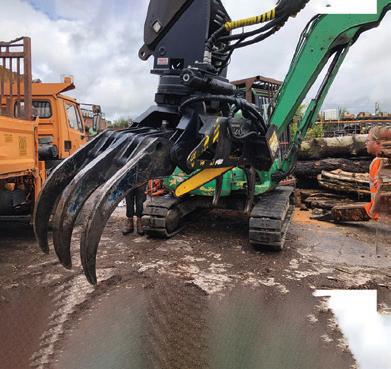
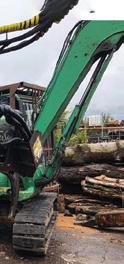
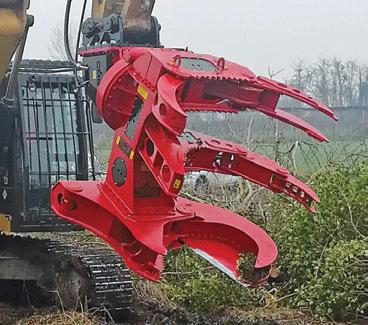







All hydraulic operated including:

• Loading
• Sideshift

• Forward shift for safe tensioning


• Clamp tilt for vertical tying off on bank sides
• Clamp rise and fall for tying off at ground level
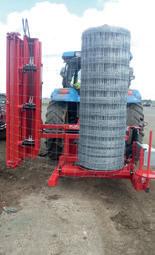




• Top link for top and bottom tension on netting
• Clamp mechanism
The deer clamp fits to the standard machine by a quick hitch system



continued from p46
Purchasers are choosier now and may show some hesitancy until a significant proportion of the land acquired for new planting has passed successfully through the approval process.
Commercial forestry has continued to sell well across England and Wales, but here too there are signs of more caution in pricing and greater attention being paid to fundamental issues such as access and land quality. Goldcrest successfully marketed Longheugh Forest, a 189ha forest north of Hexham at a guide of £34k/h. It comprised a standing volume of over 65,000 cubic metres. This is an attractive reserve of timber that should be available for harvesting as the market pulls out of its present trough.
There is activity in the bare land market for new planting but, as in Scotland, buyers are likely to be cautious until submitted proposals have secured approvals. The continued uncertainties surrounding agricultural support and how that will differ across the UK undoubtedly influence land supply.

The amenity woodland market has seen strong results. People are keen to own a parcel of woodland which offers an enjoyable resource that is relatively easy to maintain. The English market has always led the amenity sector and prices of over £24,000/
ha are common. By contrast, Scotland has shown a strengthening in this market with two sales of woodland and wetland in the range of £12,000-£20,000/ha.
Last year showed that the world is unpredictable and nobody can be certain how the forestry and planting land markets will pan out in 2023 and beyond. A more cautious market, maybe, but one that is underpinned by planting targets, the need for carbon sequestration and climate change mitigation.
As greater reliance is placed on ‘homegrown’ timber, we envisage that high qual-
ity commercial forests will continue to sell well while demand for planting land is likely to remain strong.
Specialist forestry firm Goldcrest Land & Forestry Group brokers the sale of forestry, bare land for planting, residential farming and sporting estates as well as carbon credits and renewable energy assets; provides a bespoke acquisition and investment service; delivers asset management and; offers valuations and appraisals. Professional members of the team are RICS-accredited and recognised as Registered Valuers. https://goldcrestlfg.com
The Local Authorities Treescapes Fund and Urban Tree Challenge Fund have reopened for applications will see hundreds of thousands of trees planted in communities across England.
Over £14m will be available for local authorities and community groups to access funds for new tree planting projects. The funds will level up access to nature across the country, planting trees in socially deprived urban areas with low canopy cover, increasing wellbeing and biodiversity across the country.
Forestry Commission Chief Executive Richard Stanford said: “The Urban Tree Challenge Fund and Local Authorities Treescapes Fund will help to promote resilient treescapes in England, support tree planting efforts and improve the urban environment for future generations.
“It will see thousands of trees planted in socially deprived urban areas with limited numbers of trees. Research is clear that streets with trees in them lead to better wellbeing and health out-
comes for residents as well as providing important biodiversity in our towns and cities.
“The same applies to green spaces in or close to towns and cities and we need more people to have access to quality woodlands and green spaces.”
There are several key differences between the two funds.
The Local Authority Treescapes Fund (LATF) will see local authorities drive an increase in non-woodland tree planting across our landscapes. Now entering its third round of funding, LATF will for the first time welcome individual applications from Borough, District and City Councils, as well as County Councils, Unitary and Metropolitan Boroughs.
Previously, these local authorities needed to form groups with each other or County Councils in order to apply. For more information, visit https://bit. ly/40J9zqQ.
The Urban Tree Challenge Fund (UTCF) levels up access to nature across the country, planting trees in socially deprived urban areas with low canopy cover, in proximity to healthcare and educational facilities.
The fund is open to anyone with management control of the land. UTCF has also introduced important changes and will now provide 80% funding of standard costs for planting large trees and their establishment costs for three years following planting, compared to funding 50% of standard costs in previous rounds. Funding for trial pits is also available for the first time. For more information, visit https://bit.ly/3RNuowU.
The Forestry Commission strongly encourage applications to either fund during spring or early summer so successful applicants can start their planting within the same year. Funding will be allocated on a first-come-first-serve basis.






Ash dieback, a highly destructive fungal disease, was first officially recorded in the UK in 2012 and has since become a widespread problem. The disease can cause trees to drop branches, and over time most infected trees will die. Ash trees are one of the most common species in the UK and are vital for the operation of many of our ecosystems, but it is estimated that the majority will eventually fall victim to dieback.
This is an important issue for landowners and occupiers as they can be liable if people are injured by falling trees and branches. However, although safety is a significant concern, there are other important considerations: felling of diseased trees can have a negative effect on the natural environment, removing homes for animals and impacting the growing conditions for plant life. It is also believed that leaving diseased trees in place may increase future natural resistance to ash dieback.
Balancing these issues can be difficult. Recently, officials at the Loder Valley Nature Reserve opted to close the 60-hectare reserve to carry out a major felling operation to remove unsafe trees. In contrast, the Woodland Trust has permanently closed its Avoncliffe Woodland near Bath to allow diseased trees to remain in place and to limit the impact of the disease on the
natural environment.

Given public access rights in Scotland differ from the rest of the UK, is stopping public access to woodland even possible? And, if it isn’t, what should be done to manage the risks created by ash dieback?
Mirroring the approach taken in England and preventing or even restricting public access may not always be possible in Scotland, due to the rights provided by the Land Reform (Scotland) Act 2003.
Section 1 of the Act gives every person in Scotland a statutory right to access land for recreational purposes, for the purposes of carrying out a “relevant educational activity”, or for carrying on, commercially or for profit, an activity which the person could carry on otherwise than commercially or for profit.




These rights are limited to pedestrian access only with a specific exception for users of disability vehicles.
There is a duty on the landowner to manage the land in a way which respects the access rights and which does not cause unreasonable interference to people seeking to exercise them. The Scottish Outdoor Access Code, which was published by Scot-
tish Natural Heritage (now NatureScot) in 2005 provides detailed guidance on the practical operation of the 2003 Act.
The duties don’t mean that land managers are entirely prohibited from preventing access over their land, and the Outdoor Access Code recognises that access can be restricted when certain works are being carried out, including necessary tree felling.


The access can be restricted in different ways. For example, exclusion from particular routes or exclusion at particular times of day. However, any restrictions must be “reasonable and practicable” which the Outdoor Access Code defines as being for the minimum area and period involved restrictions to access must be appropriate to the work being carried out.
It is unlikely that permanent exclusion of the public from an entire woodland area could be justified and considered consistent with the rights conferred by the 2003 Act, given that diseased trees can be removed. It may however be possible to allow certain areas of woodland to decay


naturally.

Accordingly, while it may not be possible to take the same approach as at Avoncliff, it might be that access to certain zones can be restricted if other routes through the woodland remain open.

Confor has partnered with law firms Brodies LLP and Atkinson Ritson Solicitors to run a legal clinic for members looking for guidance on key issues that impact forest owners and the forestry sector.

Whether your query is employment law, health & safety, planning, tax or property-related, contact one of our partners for a free initial consultation.
For members based anywhere in the UK Brodies LLP 0131 228 3777
www.brodies.com confor@brodies.com
For members based in England/Wales
Atkinson Ritson Solicitors 01228 525221
www.atkinsonritson.co.uk info@atkinsonritson.co.uk
The obligation to manage the land in a way which respects and does not interfere with access rights includes an obligation to take reasonable care to avoid members of the public being injured by trees. Landowners also have obligations arising from the Occupiers Liability (Scotland) Act 1960.
Accordingly, it is necessary to assess the risks posed by trees and to take steps to manage those risks by way of pruning and felling where necessary.



There is no requirement to ensure that trees are entirely safe and landowners are not obliged to carry out regular surveys of every tree. The decision of whether or not to pro-actively survey should be made with reference to patterns of use.
Remote sections of woodland generally not accessed by members of the public are unlikely to require a pro-active inspection regime. By contrast, heavily used paths and routes may require regular inspection for nearby trees. It is necessary to consider the full woodland area and to identify which approach is appropriate.
What should be done if damaged trees are identified will also depend on the area in which the trees are located. In high traffic areas, where no alternative routes are available, the only option may be to fell or prune the tree. Where either an alternative route can be provided or foot traffic is rare, steps could be taken to restrict access and redirect walkers with reference to the hazards posed by the trees.
This could be justified by the environmental benefits of allowing trees to decay naturally.
This is an important issue for landowners and easy answers are unlikely; a balance needs to be struck. The Tree Council’s observation is perhaps a useful summation: “A sense of proportion is vital. This can be achieved only be considering the tree’s place in a wider management context and people’s relationship to that context locally.”
£25,000 to £40,000 per annum (Dependant on experience)
The Green Action Trust is one of Scotland’s leading environmental charities - regenerating Central Scotland by creating and improving greenspaces, planting and managing woodlands, and enhancing a range of habitats for over 40 years.

We are passionate about the positive environmental and social change we can deliver in Scotland and are seeking a highly motivated Forester/Senior Forester to join our growing team and put their own mark on shaping our future.
Our flexible and supportive working environment will support your personal development, ensuring you have all the tools necessary to succeed. All positions will involve hybrid working. Travel within Scotland will be required.
For further information on the various roles available and how to apply please visit: greenactiontrust.org/our-vacancies/
Closing date: 9.00am Tuesday 14th February 2023.

“THERE IS NO REQUIREMENT TO ENSURE THAT TREES ARE ENTIRELY SAFE AND LANDOWNERS ARE NOT OBLIGED TO CARRY OUT REGULAR SURVEYS OF EVERY TREE.”Hear and be Heard
FISA is looking to create industry guidance for the safe use of machinery that has been modified beyond its original scope, a practice that has become increasingly common in forestry.

The Forest Industry Safety Accord (FISA) has set up the Modified Machinery subgroup as a subset of the Plant & Equipment Working Group in recognition of the industry’s increasingly routine conversion and use of third-party machinery which has been repurposed or redesigned. In practice, end-users need industry guidance on safe machine specification and use, while the companies that modify these machines need support ensure that the end product is fit for purpose and safe
for its intended use.
The intention is to create industry guidance, including examples, focusing on those modified machines most likely to cause risk. The new guidance will build on the recently produced FISA Technical Note Technical Note 003 Inspection of Work Equipment & Machines, covering Provision and Use of Work Equipment Regulations (PUWER) and Lifting Operations and Lifting Equipment Regulations (LOLER), in addition to the ‘FISA 608 Tree Shear and Grapple Saw Safety Guide’.
FISA is taking a cautionary approach to this issue, as the rate of production of modified machinery is increasing alongside technological advances and increasing mechanisation. Without a doubt, mechanised harvesting has improved safety in forestry, but to make the most of the safety advantages we need to manage the risks associated with this kind of work.
The subgroup will be chaired by Andy Newbold, who combines forestry experience with engineering, being a Chartered Agricultural Engineer and Fellow of the In-
stitution of Agricultural Engineers. We are fortunate to have a wide range of skilled volunteers also involved in the subgroup, including contractors/machine users, modifiers and designers.
The Health and Safety Executive (HSE) will join the subgroup to support and offer compliance advice. HSE has no current intention to proactively inspect the issue of modified machinery; other than if an accident occurs.
FISA and HSE cannot answer any concerns expressed over the potential Null & Void of insurance cover for modified machinery on site. This depends on the individuals’ own insurance policy cover. However, it is a subject which users in this category should be aware of.
It is also important to remember that the Forest Works Manager (FWM) shares, with his contractors, the responsibility to agree the selection of suitable work equipment (including modified machinery) and systems of work on sites he controls, as well as ensuring that contractors have a ‘system’ in place to routinely check machinery for safety i.e. inspection.
Part of the FWM’s role in managing the worksite is to select competent contractors and to monitor the health and safety standards. The FWM must ensure that the contractor has a system in place for carrying out checks and maintenance on their machinery. The contractor’s inspection and recording system must include arrangements for repairs to be undertaken when faults are noted.
All employers and the self-employed have a general duty of care, so far as reasonably practicable, to ensure the health, safety and wellbeing of employees and other persons who may be affected under the Health and Safety at Work Act 1974 (HSWA).
Alongside the HSWA, PUWER and LOLER detail that employers, the self-employed and any person who has control of work equipment (supervisors/managers) must ensure the safety of employees and
FISA Plant & Equipment Working Group produced Technical Note 003 Inspection of Work Equipment & Machines to provide guidance as to what is required. A sample of a machine daily and weekly inspection record which can be adapted to your own situation is also included. The technical note states the requirements for compliance with PUWER and LOLER regulations:
LOLER Regulation 9(3)b LOLER Inspection
Requires that machines which are thoroughly examined are also regularly inspected to detect wear and tear that may make the equipment unsafe to use. Such inspections can be carried out by a competent operator. The results of inspections must be recorded.
PUWER Regulation 6: Inspection of Work Equipment
Where significant risk could result from incorrect installation, work equipment should be inspected after it is installed. These inspections must be recorded.
Inspection at suitable intervals will also be needed where deterioration during use could lead to ’significant risk’ i.e. people being killed or seriously injured. These are in addition to pre-use checks.
Work equipment should also be inspected following exceptional circumstances such as accident damage or major modifications, which could lead to significant risk to the operator e.g. a damaged tractor roll bar and/or damage to anchorage points following overturning.
others who may be affected when using work equipment. PUWER applies to all work equipment. LOLER applies to all lifting equipment and accessories provided as work equipment or the parts of a machine that are used for lifting.
The requirements of LOLER are in addition to those of PUWER. To ensure compliance with the PUWER regulations, an employer must abide by the following key points highlighted within the regulations:
• Ensure the equipment/machine is suitable for the task.
• Ensure the equipment/machine is safe: Ensure maintenance is undertaken. Undertake regular inspections.

• Ensure safety features are present e.g. stickers, guarding, emergency stop and user instructions.
You must also ensure compliance with the LOLER regulations where applicable i.e. for lifting equipment.
An employer must also identify who is responsible to inspect the equipment
or machines and differentiate between the person who is suitable for (i) PUWER inspection; (ii) LOLER inspection; (iii) LOLER TE and (iv) daily checks, as these people may well be different. This can be designated to an employee, who will ensure this is undertaken within the agreed timescales. Ensure to clearly identify the person within your workplace.

When a fault is identified during an inspection, the employee must report this immediately to the employer. The employer must arrange or complete the repair within a realistic timescale. Where the equipment or machine is taken out of service, the employer must clearly identify this.
All roles within the forestry sector will need to work together to achieve the requirements of PUWER/LOLER. This includes the Forest Works Manager, Contractor and Operator working together to implement the requirements above to ensure a proactive approach to safety.
Dr Ian Willoughby, Dr Tom Nisbet and Huw Thomas of Forest Research describe the results of new research investigating the risk of water contamination from acetamiprid use in forestry.

Forest Research recommend adopting an integrated approach when dealing with the problem of the large pine weevil (Hylobius abietis) causing damage to young trees. An implicit part of this way of working is that pesticides, even if safe, should only be used as a last resort if there are no other effective, safe and affordable methods or combinations of techniques that can do the job.
Where an insecticide must be used to
protect against Hylobius damage, the most common technique in recent years has been to use acetamiprid as a pre-planting, pre-treatment application to young trees in the forest nursery before despatch to site. If necessary, this may be followed by postplanting top-up sprays in the second growing season.
But how safe is it to use acetamiprid in this way?
Acetamiprid is a neonicotinoid insecti-
cide that has been widely used since the 1990s to control aphids and other damaging insects in agricultural and horticultural food crops, and on domestic garden plants. Neonicotinoid insecticides have attracted considerable attention in the past decade due to their links to bee decline and wider ecosystem impacts and hence, for most of them, outdoor use is not permitted. However, acetamiprid has not been found to have the same impacts, and therefore its
use is allowed in many European countries.
The UK Health and Safety Executive (HSE) have a primary role to ensure human and environmental safety. They have concluded that acetamiprid, when it is used in forestry situations according to the conditions of use specified on the pesticide product label and the ‘Extension of Authorisation for Minor Use’ approval, does not pose an unacceptable risk of harm to humans or the wider environment.
This judgement is based on a detailed scrutiny of the hazards and risks of using the product Gazelle SG, and on an international review of the toxicological and en-
Left:
vironmental impact of acetamiprid by the European Commission, that included an assessment of over 400 research studies.
The risk of acetamiprid harming bees in forest situations is thought to be very low due to the way it is applied. The greatest risk of environmental harm arising from forest use of acetamiprid is thought likely to be water contamination resulting from chemical run-off from the spray operation, or accidental spillages during the mixing and filling of the concentrated insecticide product on sites close to water. For this reason, HSE require one-metre-wide unsprayed buffer zones to be established around watercourses when hand-held sprayers are used to spot-treat trees.
To further minimise the risk, the UK Forestry Standard (UKFS) specifies much larger, precautionary buffer zones of between 10-50 metres, regardless of the pesticide used. However, some stakeholders remain concerned over the risk posed by acetamiprid.

Forest Research therefore set up a research project to investigate whether the large buffer zones and other good practice measures outlined in the UKFS were sufficient to protect water, or if they needed to be strengthened. The area used for the study – a high elevation, high rainfall restock site in mid-Wales with poorly drained soils and high risk of runoff – was specifically chosen to provide a robust test of the forestry practices normally employed to protect water (Figure 1). The site was planted with pre-treated trees, and then top-up sprayed twice in the following growing season. All operations were organised by the local managers as they would have done at any other restock site, following the usual good forestry practices outlined in the UKFS including 10-20 metre buffer zones, and with no special additional precautions. We took water samples before, during, and after each treatment from five points around the site, as well as from a nearby stream that acted as an untreated control.
In only one of the 90 water samples collected was any acetamiprid detected at all, and this appeared to be due to wash-off of residues from the plastic bags in which the trees had been delivered, and which had been temporarily placed within a dry road drain. A 20-metre buffer zone below the road drain prevented the chemical entering the stream. Neither of the top-up spray
applications resulted in water contamination at any of the sampling points.
The single recorded value was 0.1022 µg l-1 of acetamiprid (i.e. 0.0000001022 grams of acetamiprid in one litre of water). This is a very low concentration, being only 20% of the Predicted No Effect Concentration (PNEC) of 0.5 µg l-1. In this context, the PNEC is the concentration below which exposure to a substance is not expected to cause any adverse effects on aquatic life.
By comparison, the acute reference dose is defined as the amount that can be ingested by people over a short period of time, usually during one meal or one day, without appreciable health risk, and for acetamiprid is 25 µg per kilogram of bodyweight. The maximum permitted residue of acetamiprid on a typical 150 g apple grown for human consumption is around 60 µg (0.00006 g), more than 500 times what would be ingested by drinking one litre of water containing the highest concentration recorded in our study.
Our results showed that on a high-risk site receiving three insecticide treatments over a two-year period, the normal good forestry practice measures employed were effective in preventing contamination of stream waters by acetamiprid. Therefore, the use of 10-20 metre unsprayed buffer zones, alongside the other good forestry practices to protect water outlined in the UKFS, should be more than adequate to prevent any chemical run-off contaminating watercourses on restock sites in the UK.

However, as an additional precaution we recommend that planting bags should not be placed within or near road or forest drains, and they should be removed from the site at the end of each day. Industry guidance has been tightened to address this point. Further research continues to develop integrated approaches and enable reductions in pesticide use.
Further information
• Full details of the research & links to Thomas et al. (2022): https://bit.ly/3D4GDiO
• Forest Research comprehensive guidance on integrated Hylobius pest management (Willoughby et al. (2022)): https://bit.ly/3QTfxRi
• UK Forestry Standard (UKFS): https://bit.ly/3GYbfnd
A watercourse running through the study area. The location was chosen to represent sites with potentially high risk of run-off and water contamination, being a high elevation, high rainfall restock coupe in mid-Wales, with poorly drained soils. Below: Top-up spraying on site with acetamiprid mixed with a dye marker.seen shear type felling heads used in the past, so there is a little ‘back to the future’ going on with the rise in popularity for tree shears in recent years.
Many shears nowadays work on the principal of one movable blade, as opposed to two, and grip the stem so that they can then be placed in an appropriate location when felled as opposed to free falling.
Why and where might you, or your contractors, use a tree shear? Most forest managers accept that minimising chainsaw use is now necessary, either for health and safety reasons or simply due to availability of skilled operatives, so a shear makes sense



of regen along the roadside. The operator drops off their bucket, attaches their tree shear for half an hour, removes the branches and regen, then changes it back to the bucket and continues working their way along the road.
No fuss, no drama, all part of the job and, in my opinion, looks neater than the work of a mulcher in similar circumstances.
Tree shears are effective across a range of tree sizes and can work very close to the ground – below the last whorl of branches if permanent removal is required - and are less susceptible to damage caused by striking stones.
Harvester chains don’t like very small diameter stems, they tend to flick the chain off the guide bar, hence why you often see operators ripping out small stems and regen, and nor do they like stone and grit. Finally, harvester heads also use chain oil when the saw is in operation – something you probably don’t want near water or sen-
The main variation in tree shear design is whether they are equipped with a fixed or moving knife. However, modern design changes can allow for things like a replaceable knife. More recently, and with the advent of disease and the requirement for dismantling of trees, many manufacturers have moved on from the basic shear concept and now include rotators and tilt mechanisms to allow accurate placing of the shear when dismantling.
Though, remember you must ensure that the base machine meets safety requirements e.g. falling object protection.
TMK produce several tree shears, with cutting capacities from 150-400mm. The TMK shears can be fitted to a range of base machines, including excavators, forwarder/ timber cranes, and in some circumstances
continued on page 59
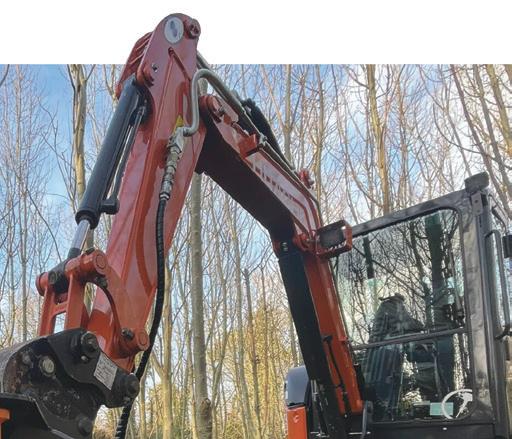








Superior planting stock for commercial forestry. Specialist grower of northern UK and Scottish seed zone provenances to suit all planting requirements





We are situated in the beautiful county of Northumberland and supply around 15 million bareroot conifer and broadleaf trees per year to a wide customer base. A Plant Healthy accredited grower of major native timber and woodland species including improved Sitka Spruce. Trees can be pre -treated against Pine Weevil if required.






Our team have over 200 collective years experience in growing and nursery production as well as a firm understanding of the forestry industry. Our cold storage facilities ensure our trees are stored at the optimum temperature until you need them. Please get in touch today. No query is too big or small.

telehandlers too.
On an excavator, the shear heads are fixed, much like a bucket, whilst on a forestry crane they hang or dangle in a similar fashion to a harvester head or grab and are fitted with a rotator to permit optimal placing on a stem. The largest heads, the TMK 300 and 400 models, can only be fitted to excavators and material handlers, whilst the 250 is designed for forwarder cranes.

The smallest TMK 150 is designed for excavators from 1-4 tonnes and weighs in at 75kg – without a saddle. At the other end of the scale, the TMK 400, with a capacity of 400mm in softwood (350mm in hardwood), can be fitted to machines in the 1030 tonne weight class!

A range of options and spare parts are available for the TMK range. For example, when a number of small diameter stems are to be felled, an accumulator style grapple can be added to the shears so that several stems may be felled before they need to be placed on the ground.
Options are available as a bolt on at a later date, so they can be adapted as workload and experience dictate. TMK describe these options as being “modular”.
JAK tree shears are a well-known brand being offered for sale in the UK by Jas P Wilson. The range comprises a number of shears with several variations between models. As with other manufacturers, several optional extras like accumulator grapples are available to make these machines more productive.
JAK tree shears are designed for use either on an excavator; a forest machine (e.g. forwarder or tractor mounted crane); and loaders/telehandlers, within which are specific models for the Avant range of compact wheeled loaders. Fitment to telehandlers is becoming more common, as discussed in a previous article, and allows for dismantling of trees too.
The JAK range of shears utilises one of three main shearing mechanisms. Either us-

ing a rear mounted shear where the grapple pulls the stem over the fixed blade/the blade through the stem; a side mounted fixed blade where the grapple again does the pulling; or guillotine style action utilising two movable blades – a giant pair of garden shears – which pivot round from the side of the stem to cut it in a pincer style movement.
One of the main benefits of the rear mounted blade is that it can be removed by undoing a series of bolts and either replaced or to allow the grab part of the machine to be used as just that – a grab for moving timber/trees etc.

The excavator models in the range are designed for attachment to models from 1.8 to 30 tonnes. The largest model is capable of cutting up to 400mm, but it comes at a cost in terms of weight – it weighs in at a little under 2 tonnes.
At the other end of the scale, the JAK 200 has a 200mm cutting capacity and, in its simplest form (without rotator), weighs in around 140kg. Finally, the JAK 350R, the only guillotine style shear that is suitable for excavator mounting, has a cutting capacity of around 350mm and should be mounted on a 12 tonne+ excavator.
Intermercato produce a variety of equipment for forestry and other industriesitems such as weighing links for timber lorries, clam shell buckets and grabs. They also offer a range of tree shears suitable for either excavator or rotohandler applications.


The Intermercato range falls into two model series: the TC and the T-Cut with variations for excavator mounting and rotohandler mounting. Both ranges are made entirely from Hardox (other manufacturers may only use Hardox for the knife), ensuring that the entire shear is built with strength in mind.

There are four models in the T-Cut range, namely the 18, 25, 30 and 40, with cutting capacities of 180mm, 250mm, 300mm and 400mm respectively. Basic weights start at 170kg for the T-Cut 18 up to a hefty 1,020kg
for the T-Cut 40. These weights don’t include a saddle or add-ons like an accumulator felling attachment. Similar models are available for rotohandlers too.
The smallest T-Cut 18 is intended for use on small excavators in the 2-5 tonne class whilst the largest model is intended for excavators in the 18-36 tonne category.
The TC range is a simplified tree shear and is available to suit machines from 4-30 tonnes. The models available are the TC210E, TC250E and TC300E, and as you may have guessed this represents cutting capacities of 210mm, 250mm and 300mm respectively.
Weights range from the smallest TC210E at 252kg to 904kg for the TC300E. Again, this is a bare weight without saddle or optional extras.
The Koala range of tree shears from MDE are the only UK-built shears to get a mention in this edition’s article. The four models in the range, the 150, 200, 300 and 400 all follow the same family design and, again, the model numbers indicate the cutting capacity.
The design of the Koala range is such that there is only one moving arm to draw material across the knife edge, whilst the opposite side of the shear is fixed – unlike other designs which work much like a grapple. This does make for fewer moving parts, less maintenance and less potential for parts to get twisted or damaged, but it may also have limitations when rehandling cut material.
However, features such as Hardox construction; a replaceable cutting edge and bolt-on saddles all work in its favour. Bolton saddles allow for a relatively quick swap over - for example between S40 and S50 hitches - so one tree shear could be shared by different machines in a fleet with relative ease.
The Koala range is intended for excavators from 1.5 tonnes up to 36 tonnes, with weights varying between 100kg for the smallest model 150 and 760kg for the largest 400 model.





















samples the Audi Q3 Coupe, a smaller than its standard sibling.



Over 10 years ago, Audi introduced a range of SUVs, starting with the Q7. This was a large vehicle and not so loved in the UK. It was then followed by the smaller Q5, which sold really well and was a very nice product. Then came the even smaller Q3, which was perhaps a little too compact to be really practical.
Over time, all these models were replaced. The second generation Q7 no longer seemed so big and has sold very well, as has the second generation Q5. Most recent-







ly, the second generation Q3 has morphed into a rather nice looking vehicle slightly larger than the model it replaced.
Subsequently these three models have been refreshed with a dose of chrome, and light and grille changes that make them look overly-designed and similar to each other, though the Q3 still looks good.

To expand market share, Audi then went on to introduce the Q8, a large grilled coupe version of the Q7, followed by coupe versions of the Q5 and Q3. I was interested


in testing the Q3 and so Audi lent me a Q3 Coupe fitted with front wheel drive and a petrol engine - I would have preferred to try out the Q3 TDI Quattro.
The Q3 Coupe is £1,000 more expensive than the ordinary and better-looking Q3. The 1.5 litre petrol front wheel drive version tested here retails at £41,000. The 4WD diesel version costs another £3,000. Interestingly, both versions are rated at just over 40mpg and in my hands I saw average
SUV with a bigger price tag continued on p63






fuel consumption at exactly that: 40mpg. It varied slightly higher if snailing it and less at higher motorway speeds.
The car was equipped with a 7-speed automatic gearbox, which worked well in combination with the 1.5 litre 4-cylinder engine, which has 150bhp and 250NM of torque. Even though its official acceleration is 9.4 seconds to 62mph, the car was nippy and the engine keen to rev. I certainly never found it lacking punch and it was plenty fast enough, at least when only the driver on board.
It also sounded good and, combined with good handling, made for a sporty drive. The brakes, oon the other hand, were not as good as they could be.
The vehicle was equipped with adaptive cruise control which I was keen to use. I find that on most busy British roads, ordinary cruise control is not really suitable as you are constantly turning it on and off, and so I rarely use it. However this adaptive cruise control is great.
If you set it at, say, 70mph and you ap-
to 60 mph and then accelerate back up to 70mph once that slower car moves into the slower lane. A few times, slower cars pulled out in front of me and the Q3 slowed down right away.
It is a bit alarming as you have to trust the car to slow down quickly and not drive into the back of the car in front. On one occasion, a truck suddenly pulled out in front of me and I felt the need to jam on the brakes, not leaving it to the car to brake itself automatically. I am sure it would have done so and over time you would learn to trust it, but first out it is a bit disconcerting.
The car weighs a hefty 1,570kg but can only tow a 750kg braked trailer. The fuel tank holds 58 litres and the boot 530 litres, rising to 1,400 litres with the seat backs folded down. This vehicle had 19” wheels and 235/50 tyres.

The steering is nice and precise, adding to the enjoyable drive. The engine had the
same coasting system as fitted to the Audi A4 TDI Quattro I tested a few months ago and which, in the that car, was too noticeable and spoiled the driving experience. In this petrol engine version you don’t notice it so much but I would prefer not to have it.


As has been the case with Audis of late, the dashboard presents too much information. A simpler layout would be much better.
I don’t know if the Q3 Coupe drives more sportily than the standard Q3 but I certainly I enjoyed driving it and gaining my first experience of adaptive cruise control. It has a slightly raised ground clearance but is obviously no off roader. It does seem expensive compared to other small SUVs but nice all the same. Enjoy.
Eamonn Wall is a forestry and arboricultural consultant and Managing Director of Eamonn Wall & Co Woodland Design and Management.

“THE CAR WEIGHS A HEFTY 1,570KG BUT CAN ONLY TOW A 750KG BRAKED TRAILER. THE FUEL TANK HOLDS
58 LITRES AND THE BOOT 530 LITRES, RISING TO 1,400 LITRES WITH THE SEAT BACKS FOLDED DOWN.”SMALL WOODLAND OWNER Professor Julian Evans OBE FICFor

In the December 2022 issue of Forestry and Timber News, I talked about skill shortages and the need for all of us to upskill where possible: even making it a New Year’s resolution. I should have delayed the piece a few days because in early November, two visitors from Oakley Men’s Shed came to my wood in search of tiny logs and small branches to fashion into Christmas decorations, most notably reindeer with antlers!
This got me thinking about novel marketing opportunities to help our smaller woodlands, if not pay for themselves, then at least earn a little pocket money.
Apart from firewood and offering parcels to the trade when there is enough timber to fell, one may be stumped - but think again. Below are some more creative opportunities, though the list is far from exhaustive.
Florists love greenery to bulk out and embellish displays of flowers to set the blooms off to maximum advantage. Usually they look for ‘feathery’ evergreens such as cypress or hemlock, but a more unusual one is juvenile eucalypt leaves.

I emphasis ‘juvenile’ as all eucalypts have five leaf stages and it is the ‘young’ shoots which have the stunning glaucous or bluish leaves sometimes known as ‘silver dollar’. If you own a eucalypt tree, these shoots will be near the base and, of course, are produced in coppicing. Managed production
Twigs and logs on their way to becoming Christmas reindeer!
involves keeping ‘stumps’ to no more than 1.8m tall and harvesting from the profusion of ‘epicormic’ shoots.
Under foliage, mention can also be made of cones in all their variety. Incidentally, dried pinecones make fabulous firelighters!


These fall in the same category as the above with the attraction that woodland mosses are more varied than the wretched invader of lawns. But do be careful not to allow excessive harvesting.
Foraging for fungi is largely an autumnal activity, except for the tasty morsels which appear in the spring. Every year, the papers and social media have accounts of illegal gathering or over-collecting and the pressure from ‘food for free’ enthusiasts is adding to it.
Readers of this column will know that in recent years our wood has hosted three or four truffle hunts each autumn. Initially,

autumn 2022 was a disappointment, probably because of the heat and dry earlier in the year leading to poor development of the soil inhabiting fruit bodies.
However, the final visit in December yielded six English summer truffles and the party of 14 went away well content with the experience – and the owners adequately recompensed!
Just a reminder that pea sticks, bean poles, fencing stakes and countless other ‘stick size’ produce comes from coppicing or, indeed, cleaning operations. I find small untreated posts often last long enough (2-4 years) to support fencing around individual or small group plantings of trees.

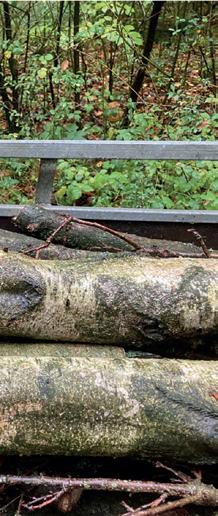
Back to the visitors from a local Men’s Shed. I didn’t charge them anything for my time or the few twigs and tiny logs collected, but they generously donated £50 to Tearfund, the international Christian relief and development charity. So, we were all pleased.

available to woodland owners.‘Silver dollar’ eucalypt leaves Dried Pinecones









UK Forestry Minister Trudy Harrison MP recently visited EGGER’s manufacturing site at Hexham, Northumberland. She was joined by Hexham’s local representative, Guy Opperman MP, and the Wood Panel Industries Federation (WPIF) Director General, Alastair Kerr. Andrew Laidler, Sales Director at EGGER (UK) Ltd commented:

“I was delighted to host this meeting with the Minister, where we had constructive discussions about wood security as a key component of sustainable UK manufacturing. It was also a pleasure to display the products made at EGGER and illustrate our ability to meet the demands of critical sectors including construction, furniture and flooring sectors.”
COMING UP IN APRIL 2023 – GET INVOLVED

Forestry in Pictures is a regular feature in FTN. For every issue, we select the most impacting photograph sent by a reader. If you have a photo you would like to see published here, please send your file to ftn@confor.org.uk. Please include your name, a short comment text to go with the picture, and an image credit. Photos should relate to forestry and timber and be of high-quality (minimum resolution 300dpi). Exceptional pictures might be considered for the front cover of a future FTN issue.
By submitting a picture to Forestry in Pictures you give Confor permission to use the file for non-commercial purposes in Forestry and Timber News or the Confor website. Photos will always be credited.
In April we will be running a feature on Career development and workforce. Remember that FTN is your magazine – get in touch if you want to suggest editorial or give us feedback on articles we have published in the past. Confor members, send us your company’s news updates or pitches for feature articles. Note that our general editorial deadline for the April 2023 FTN is 10 March 2023. If you would like to pitch an article idea, please do so by the end of February 2023.
New and used machines available with short lead time and exceptional back up service throughout UK and Ireland
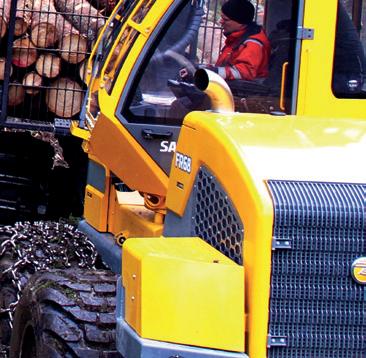




+4428 3833 0011 +353 1969 7894
www.oakleafforestry.com









35a Derryall Road, Derryvane, Portadown Co.
BT62 1PL
Sampo Rosenlew continue to develop the range with the new FR68 Forwarder. Powered by AGCO power 74AWF 280 HP engine, hydrostatic transmission, heavy duty NAF axles and 26.5 inch wheels. This new forwarder also has a rotating cab to improve visibility and operator comfort. Armagh